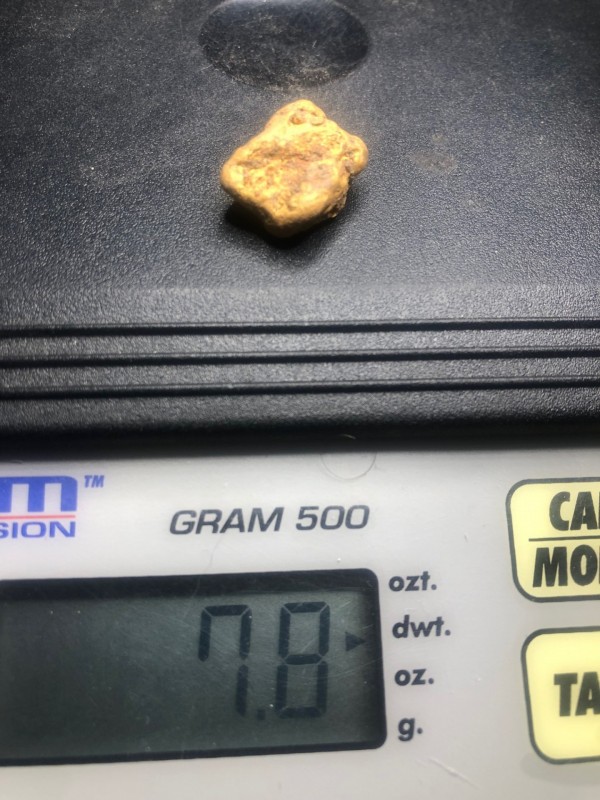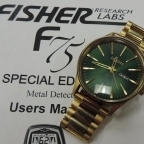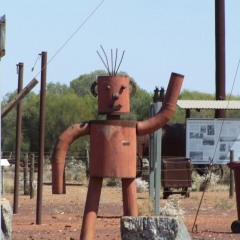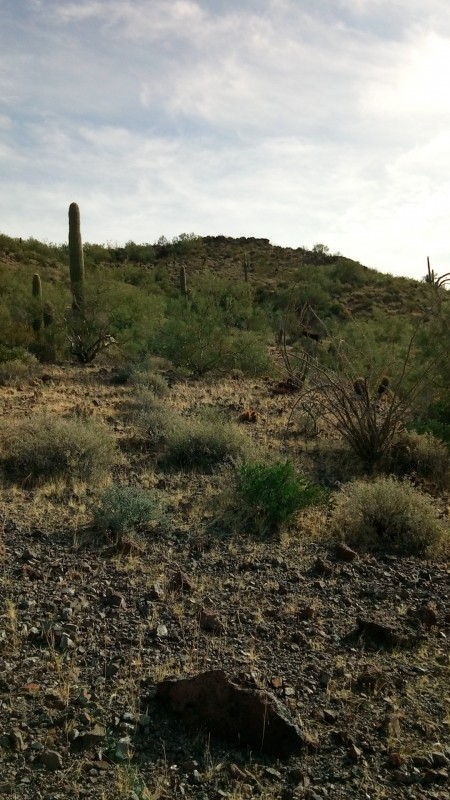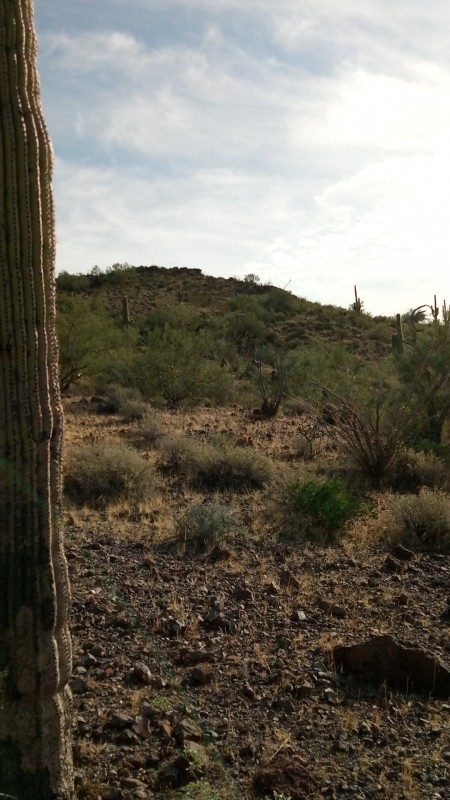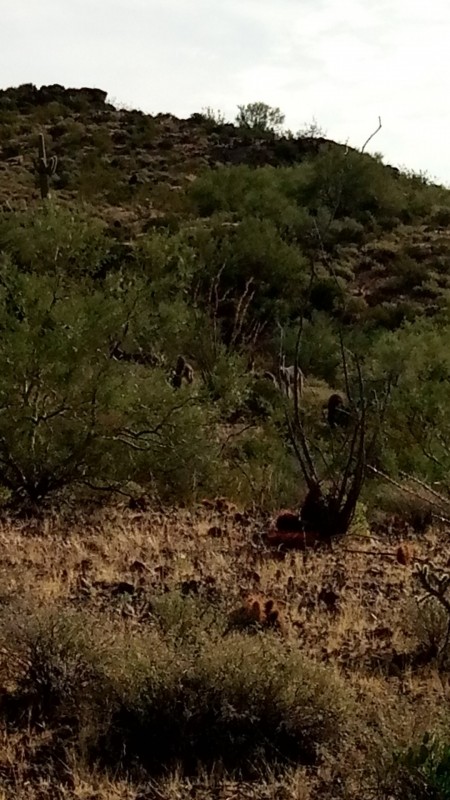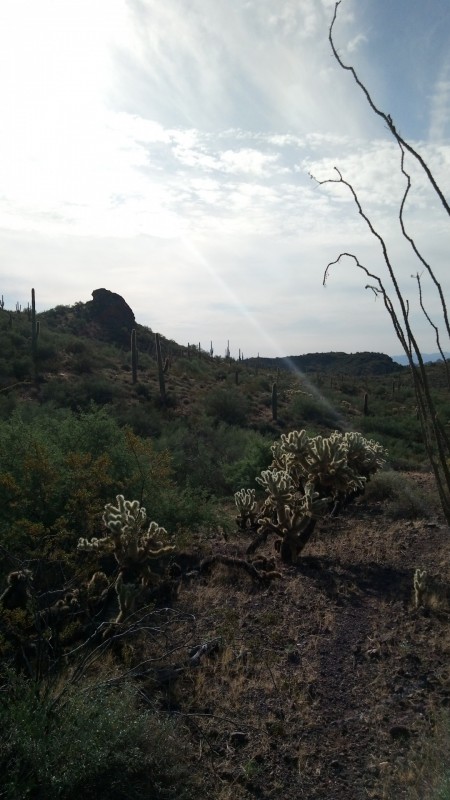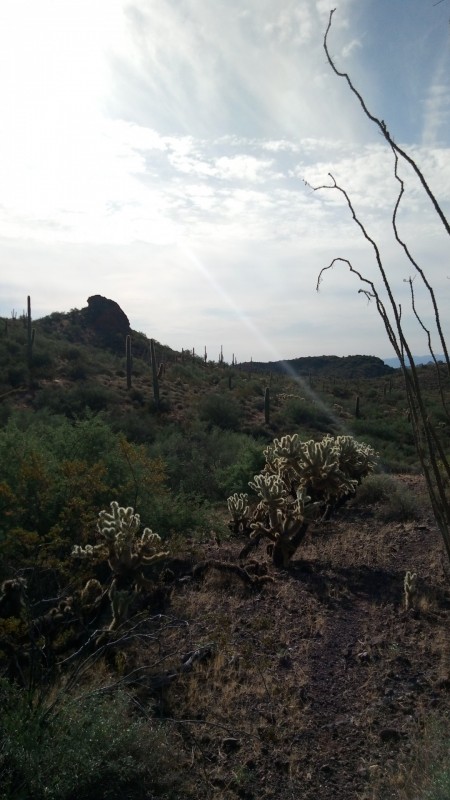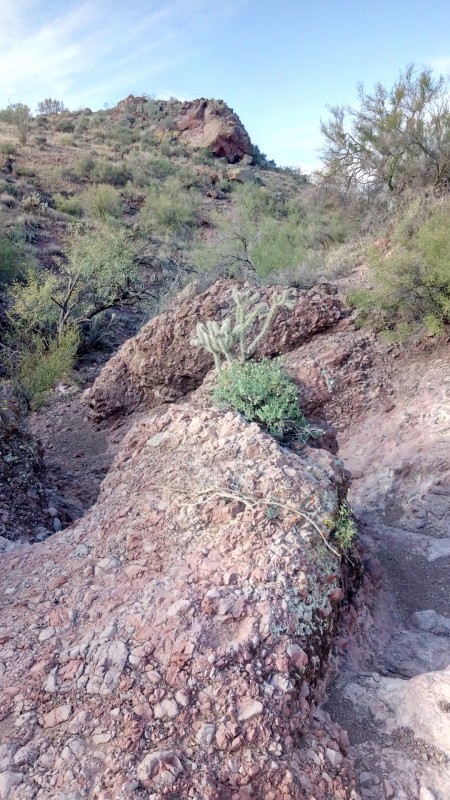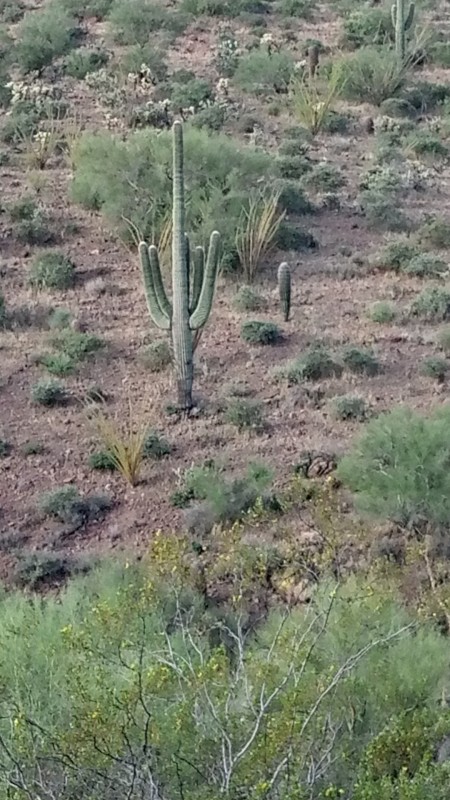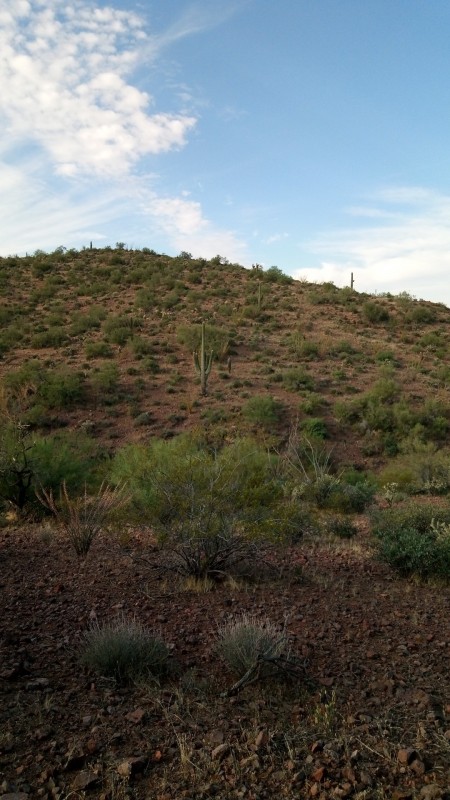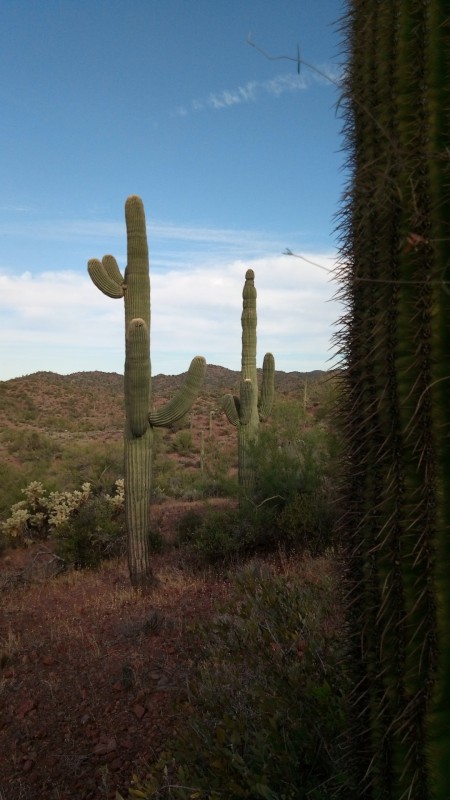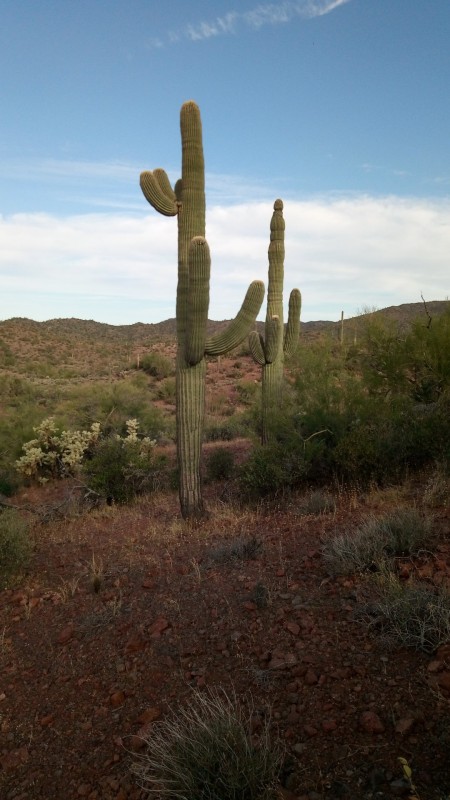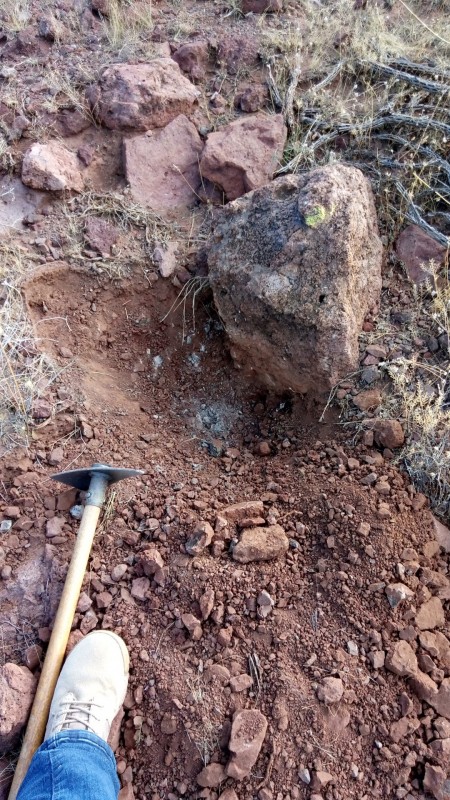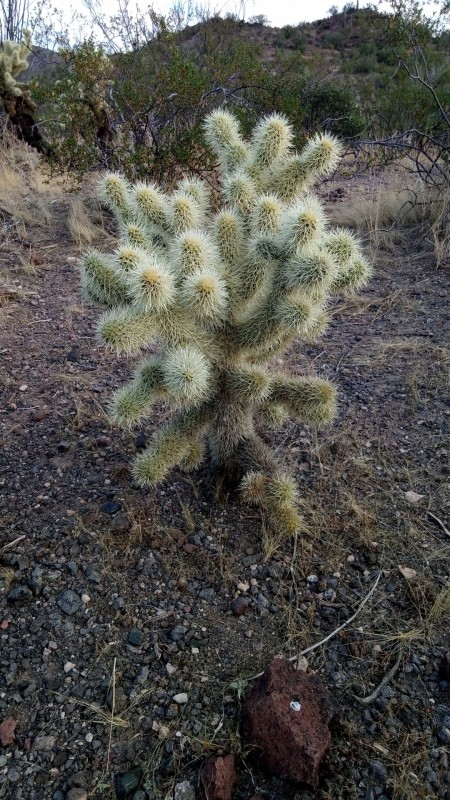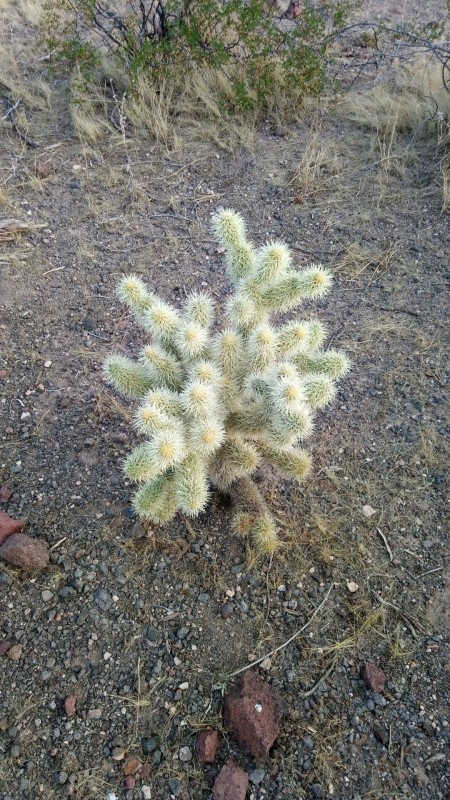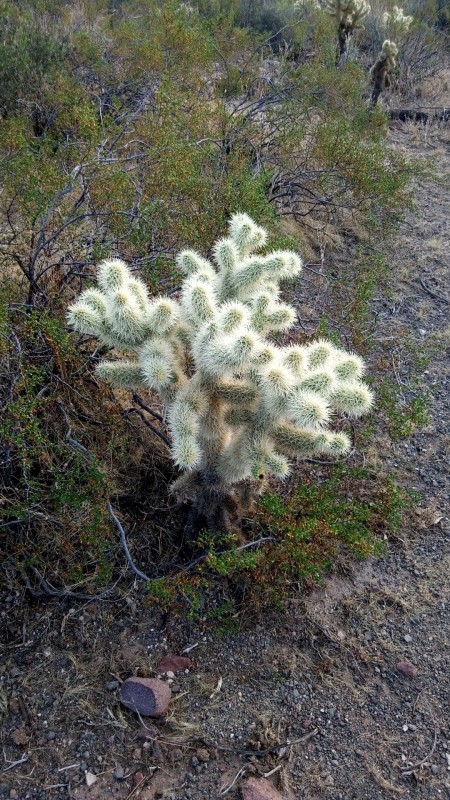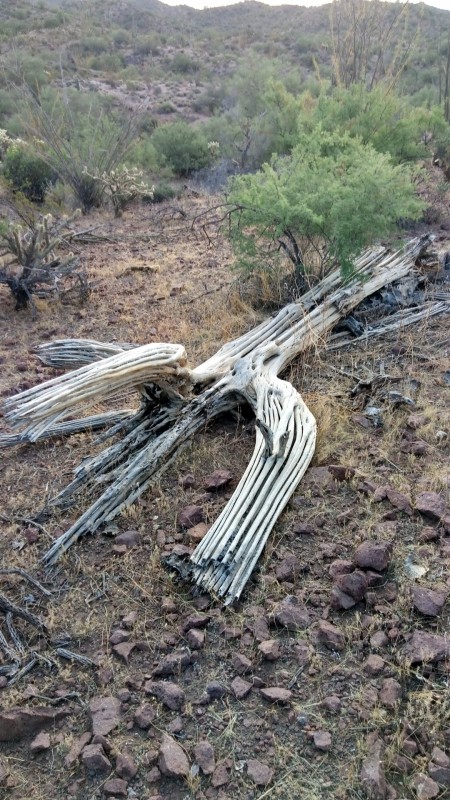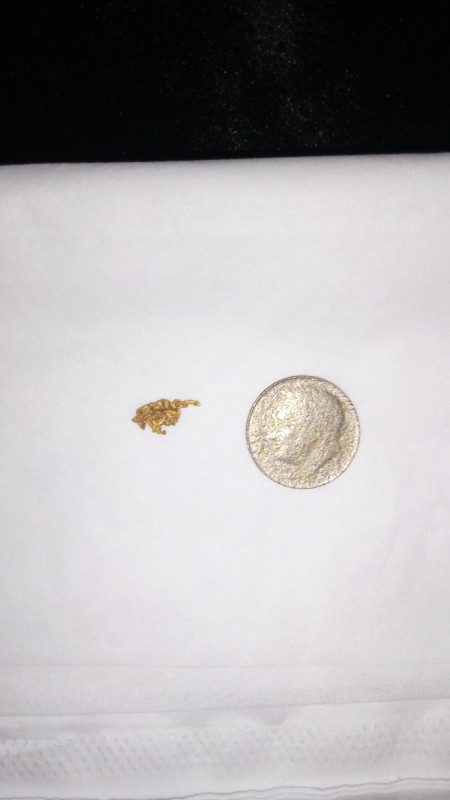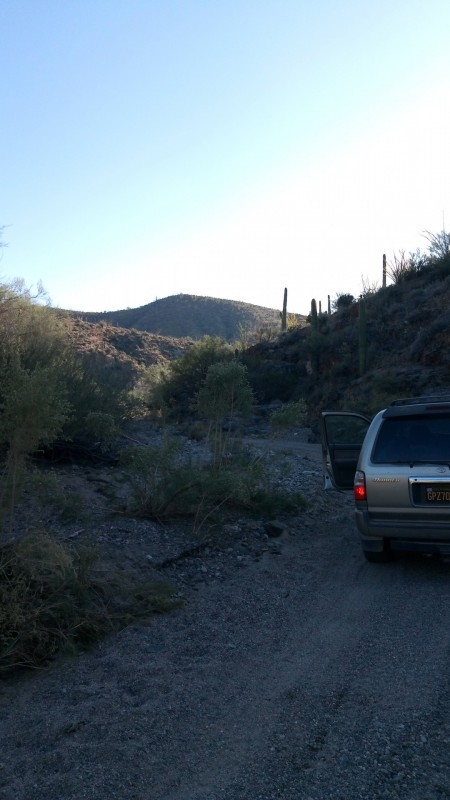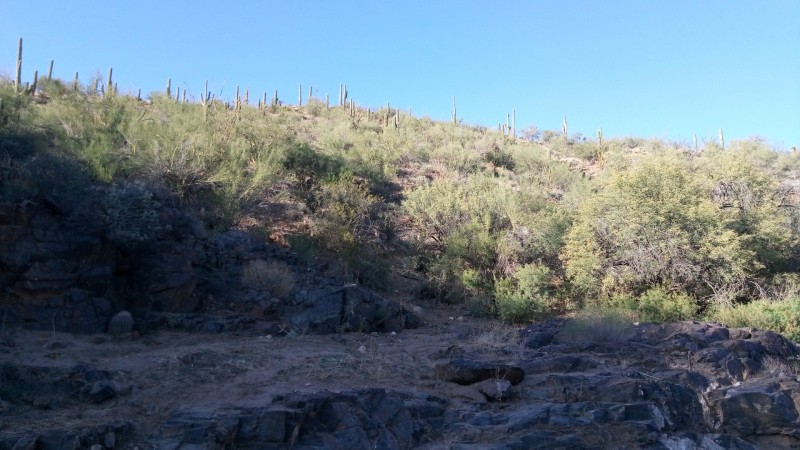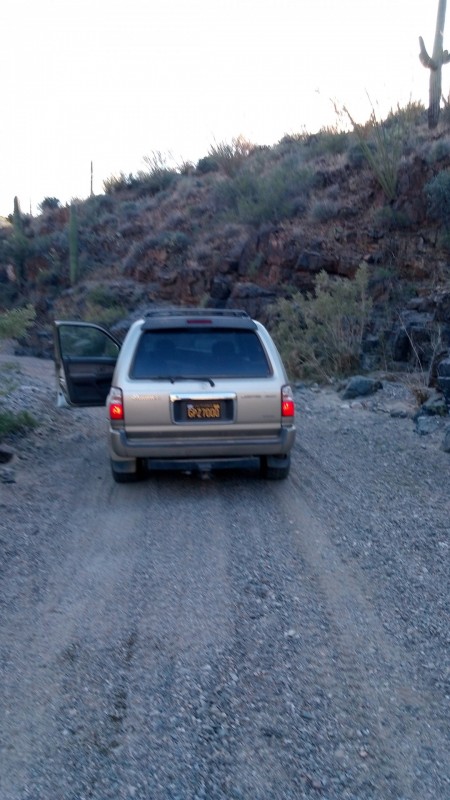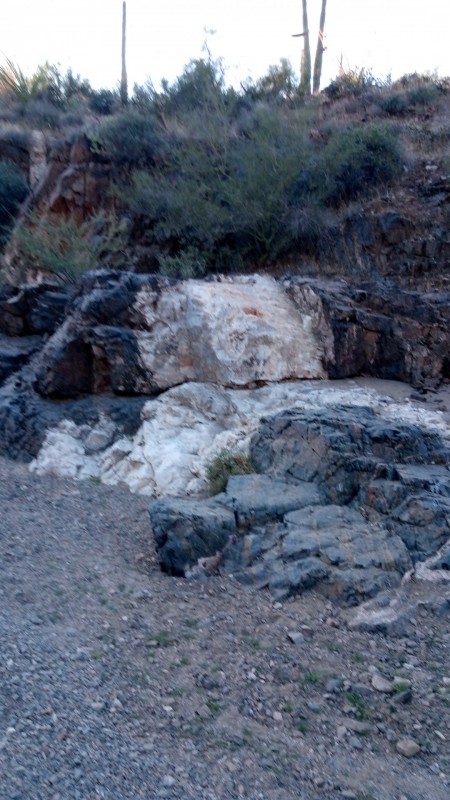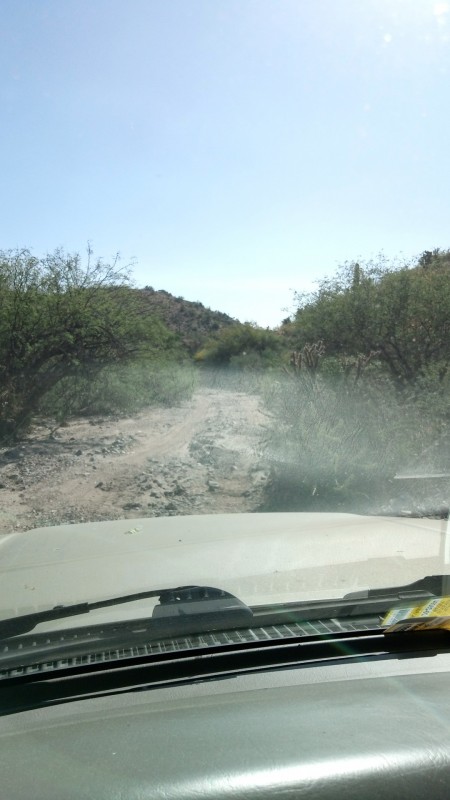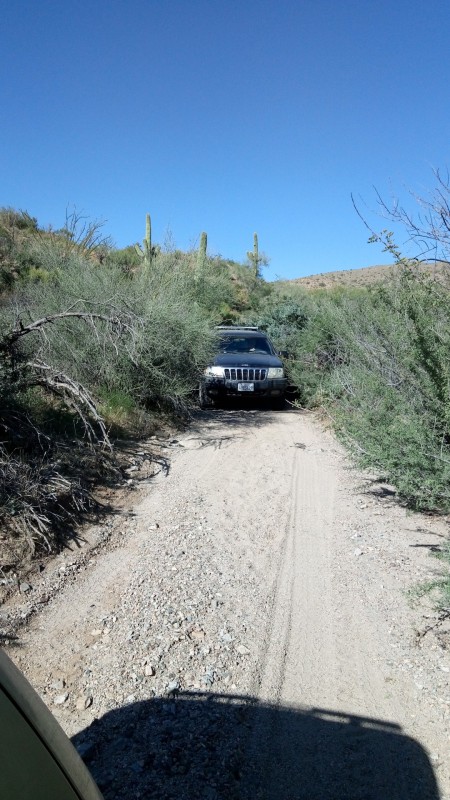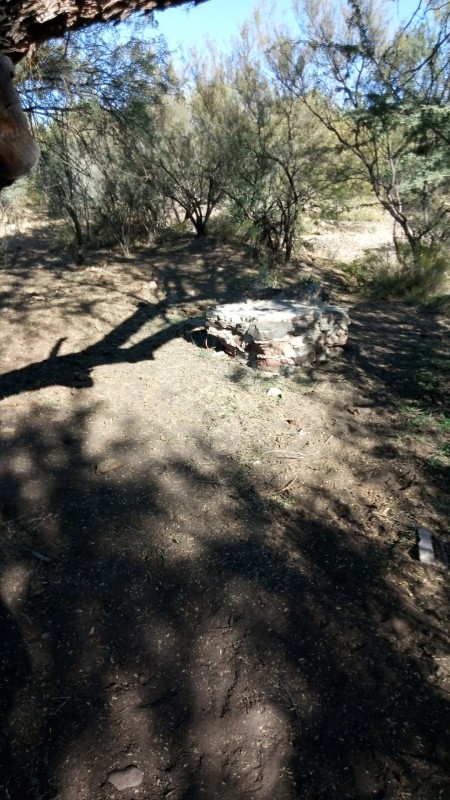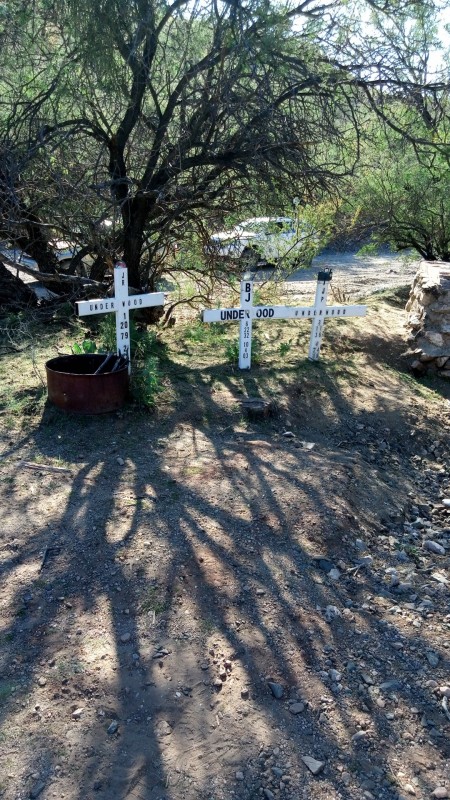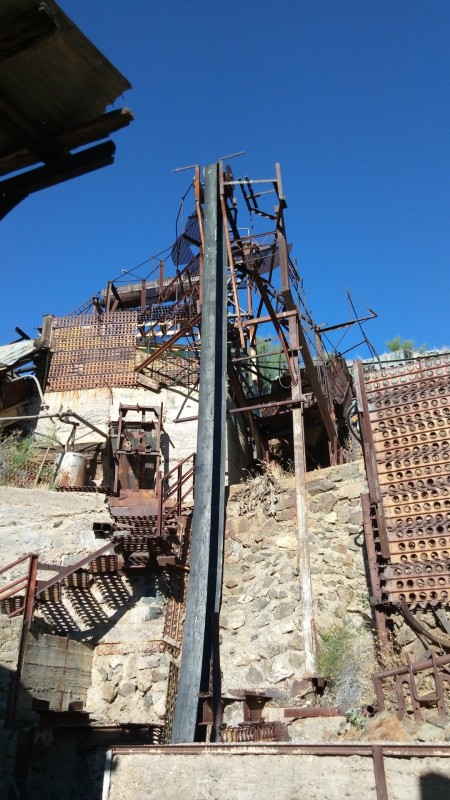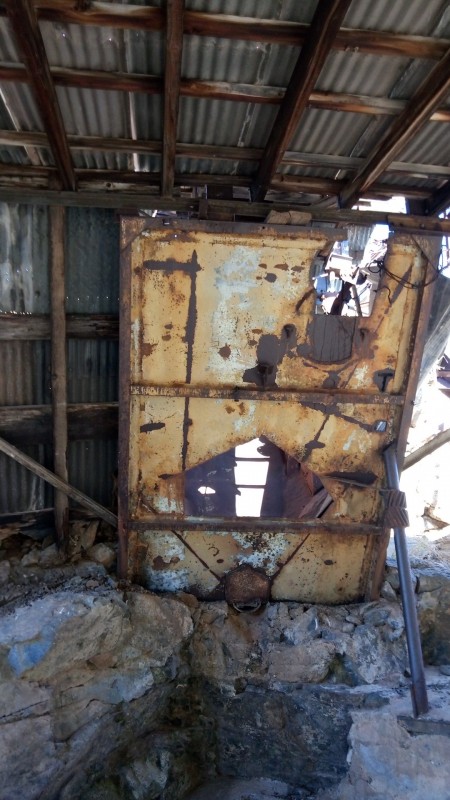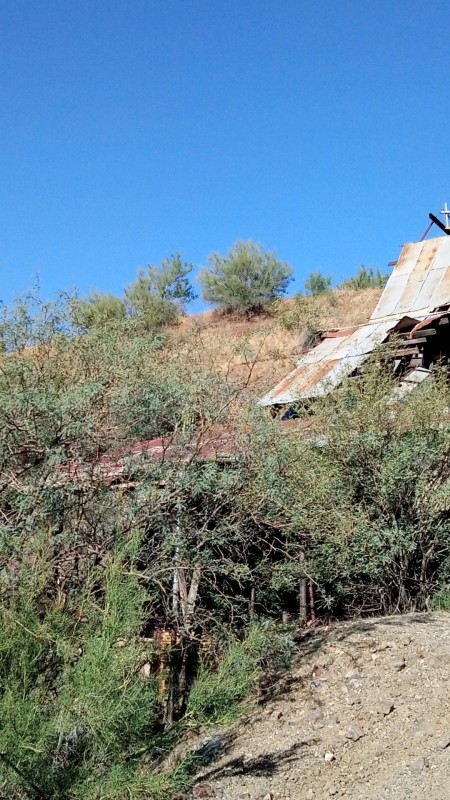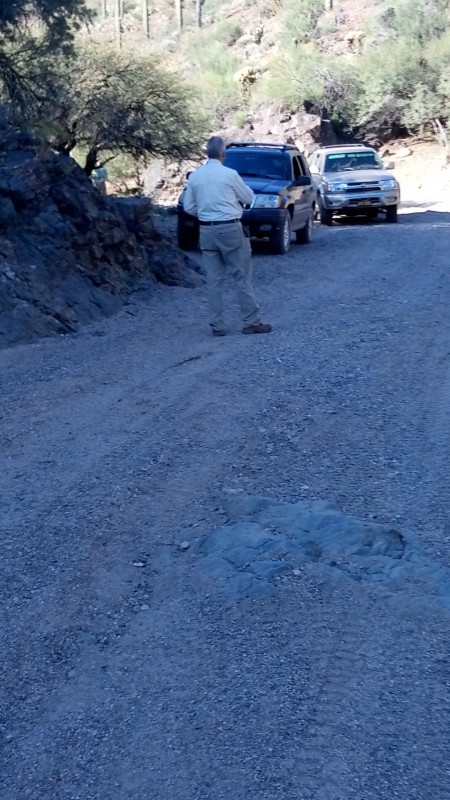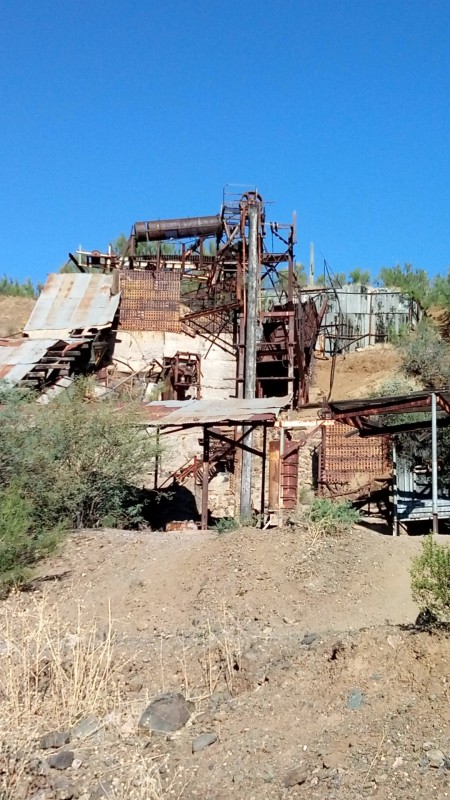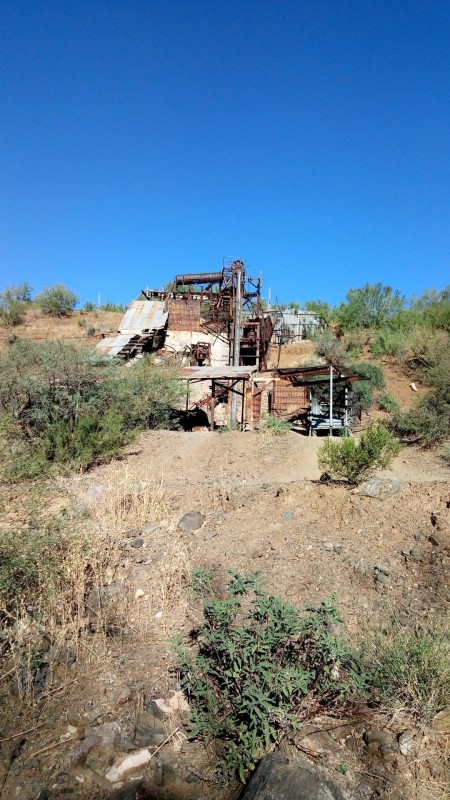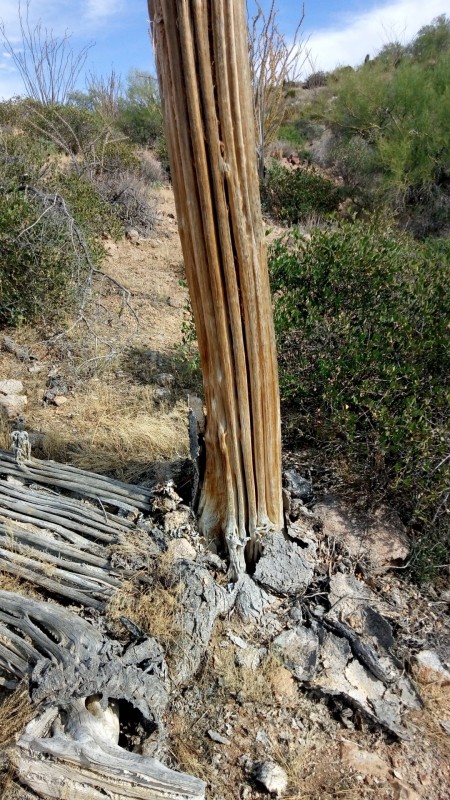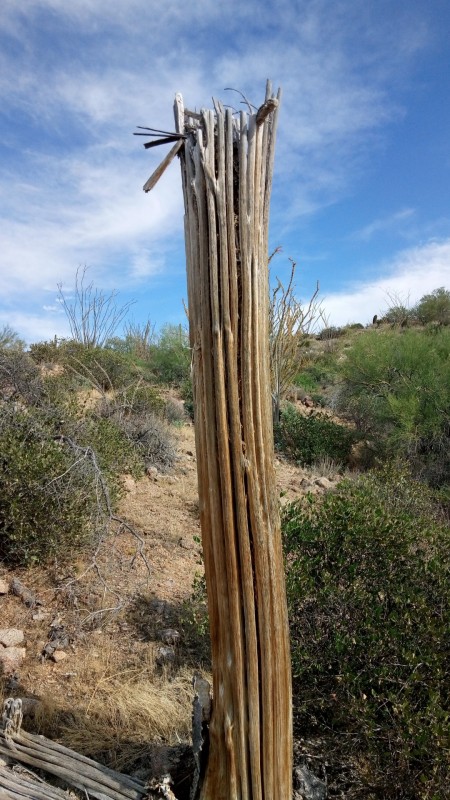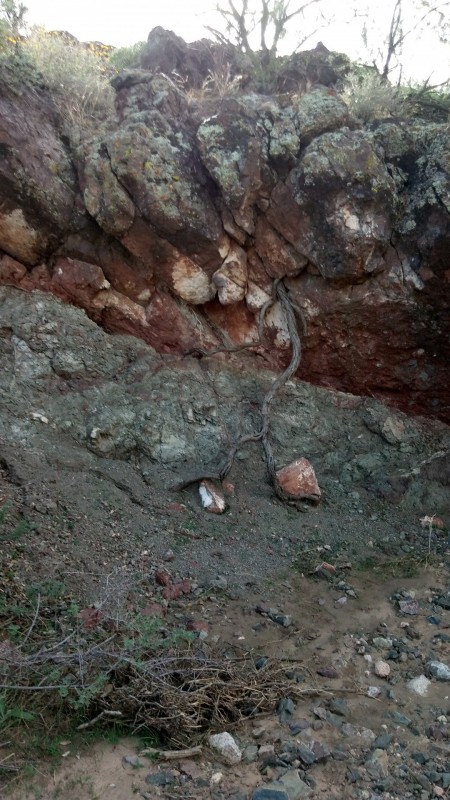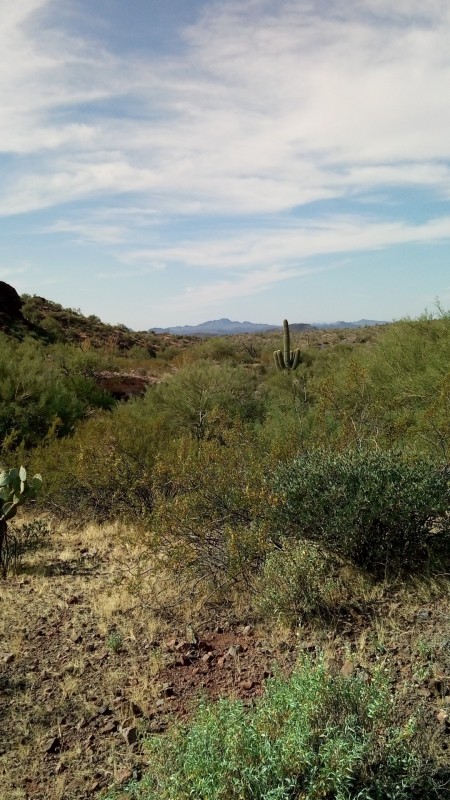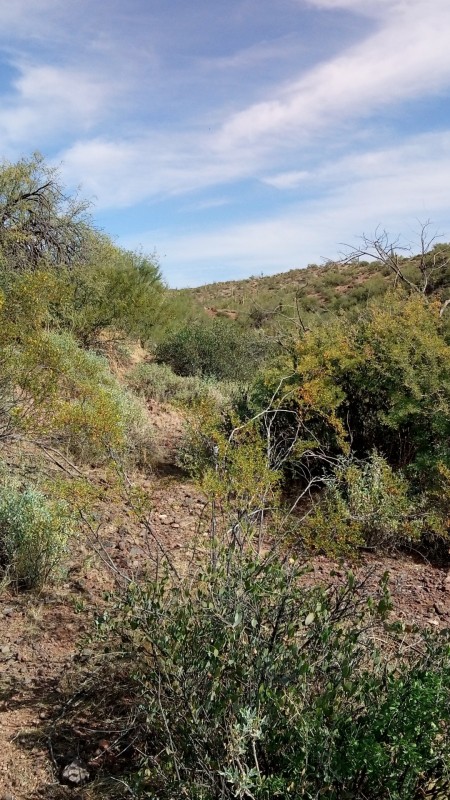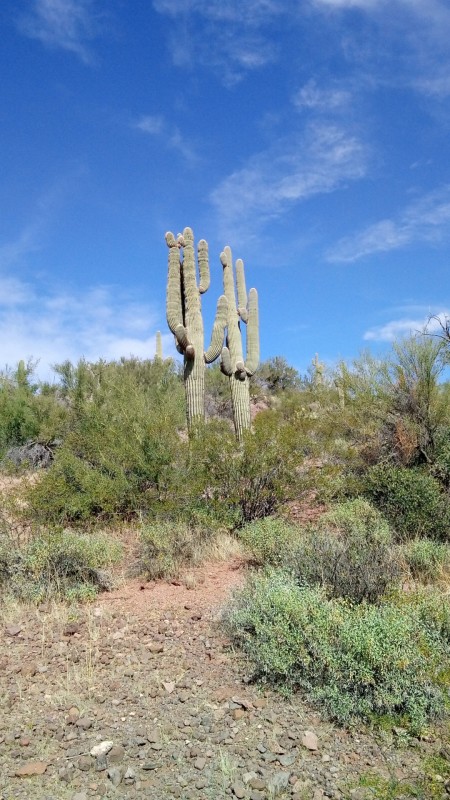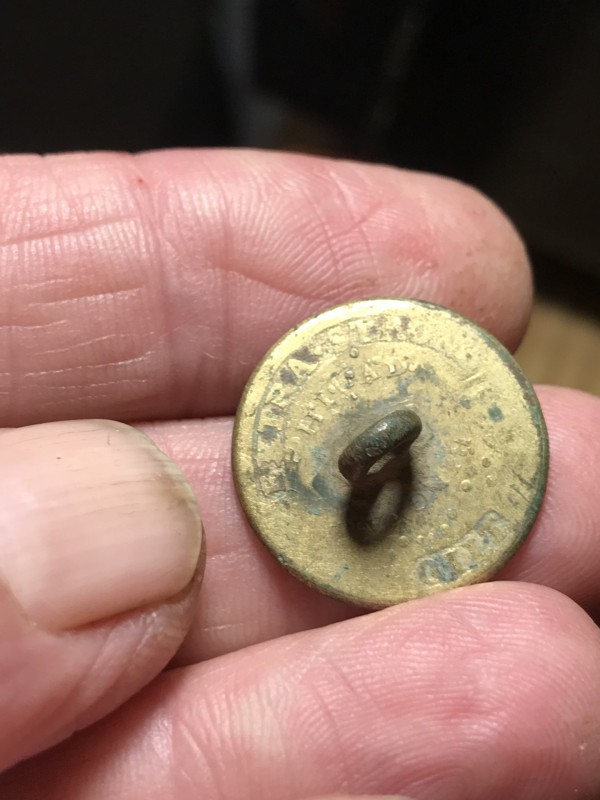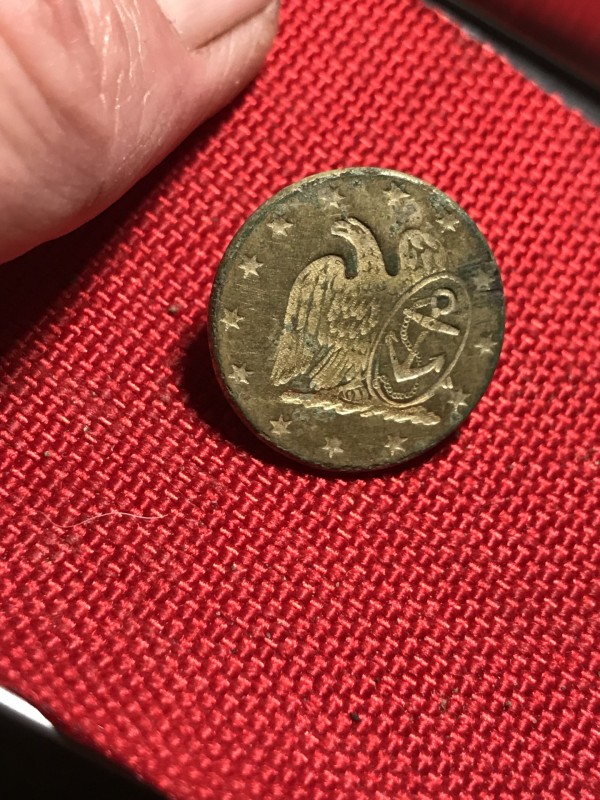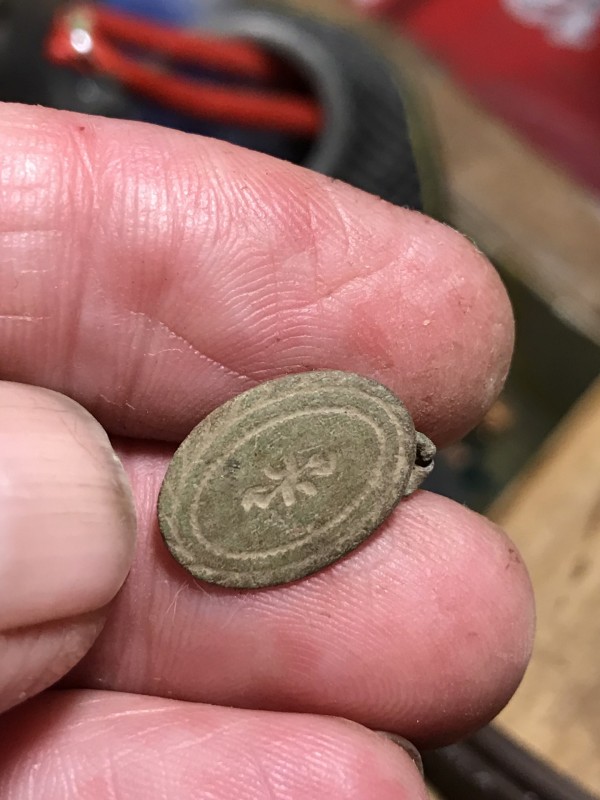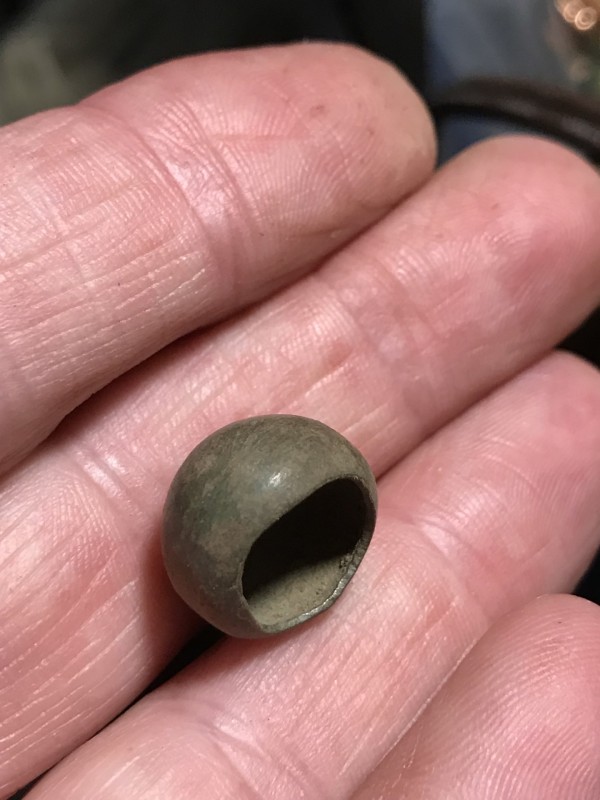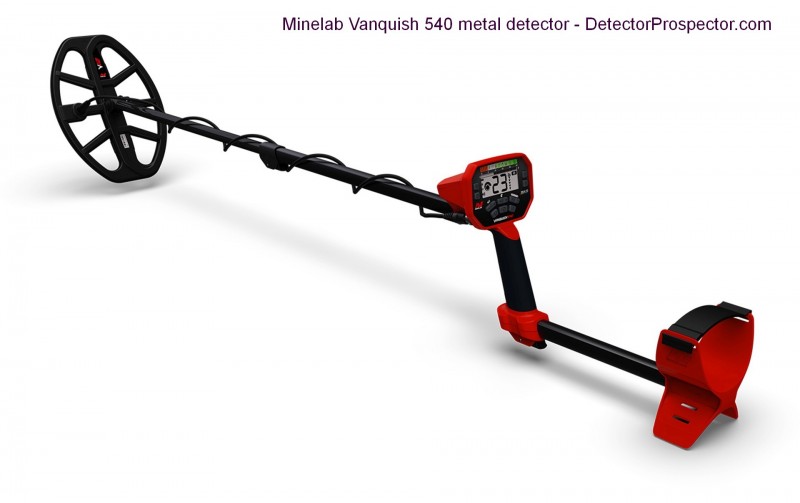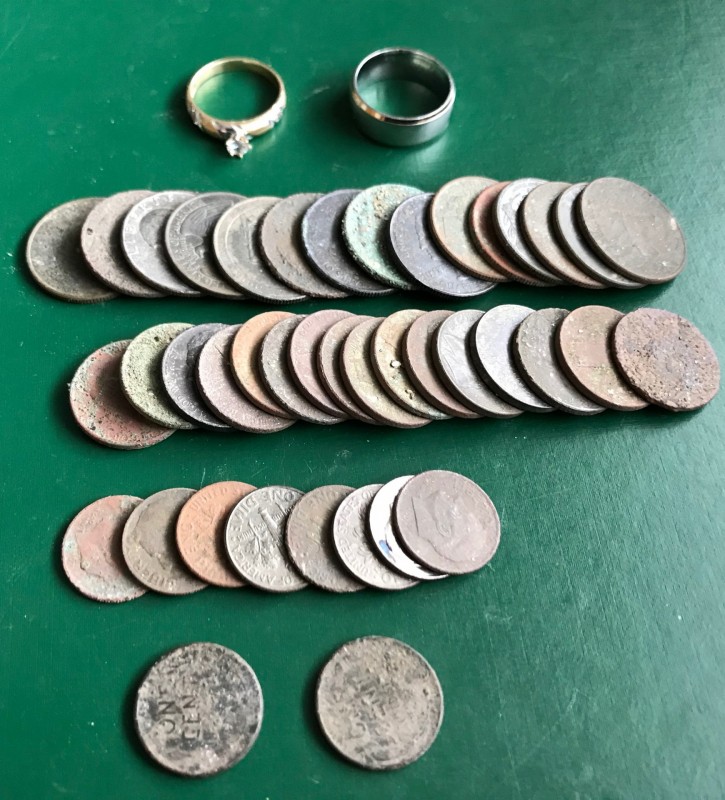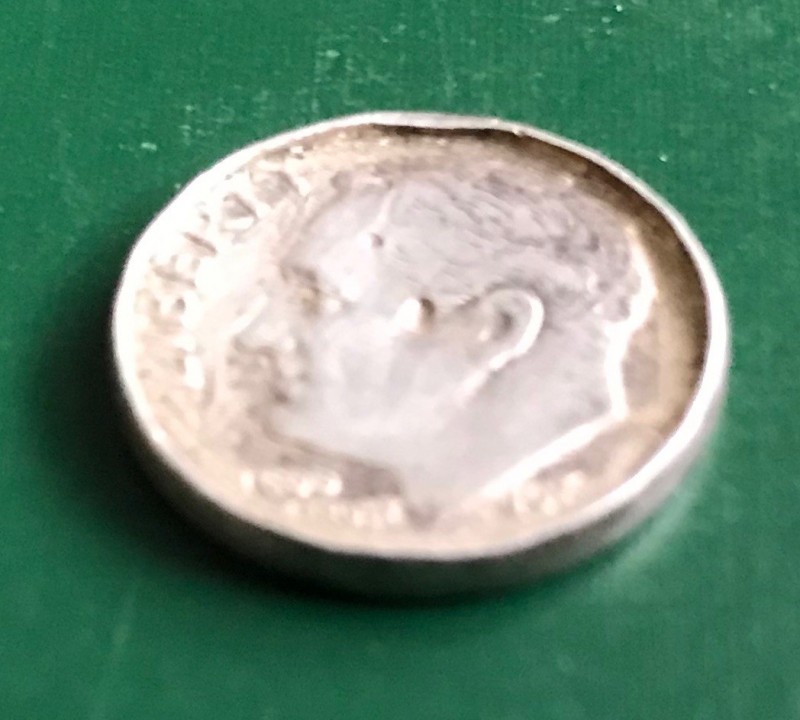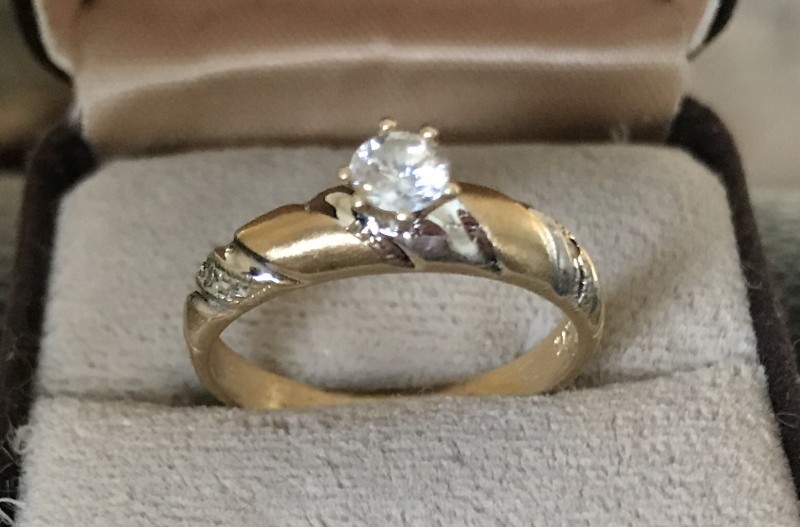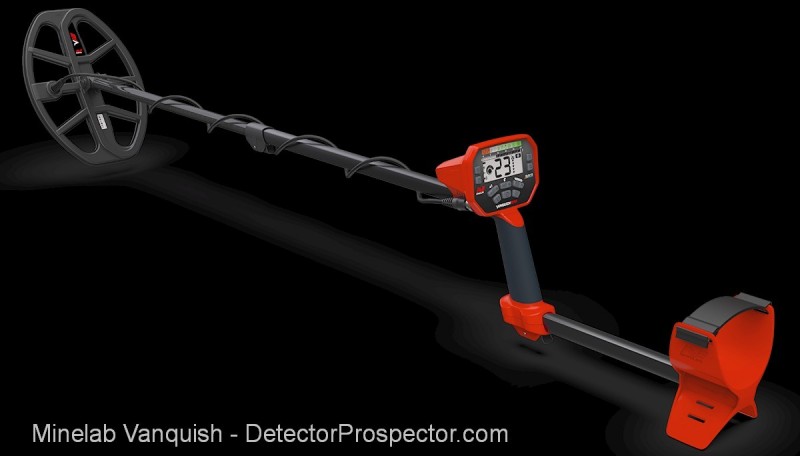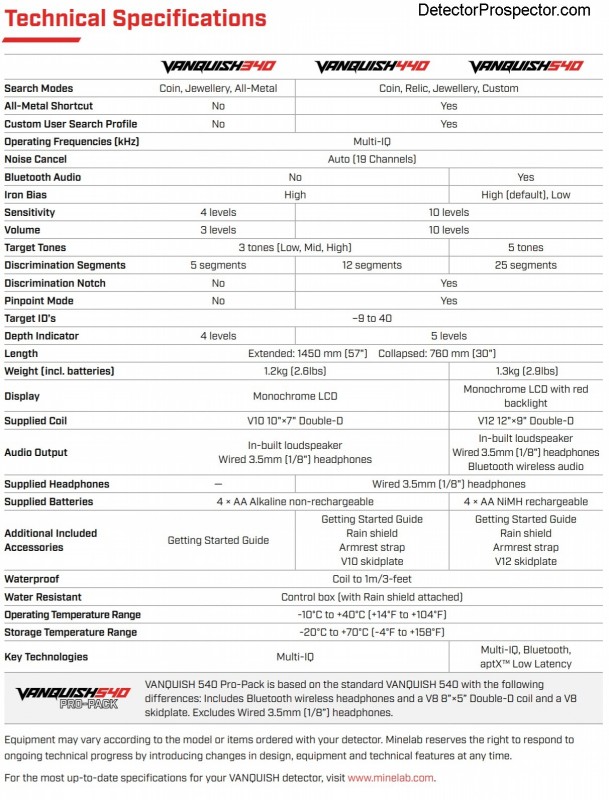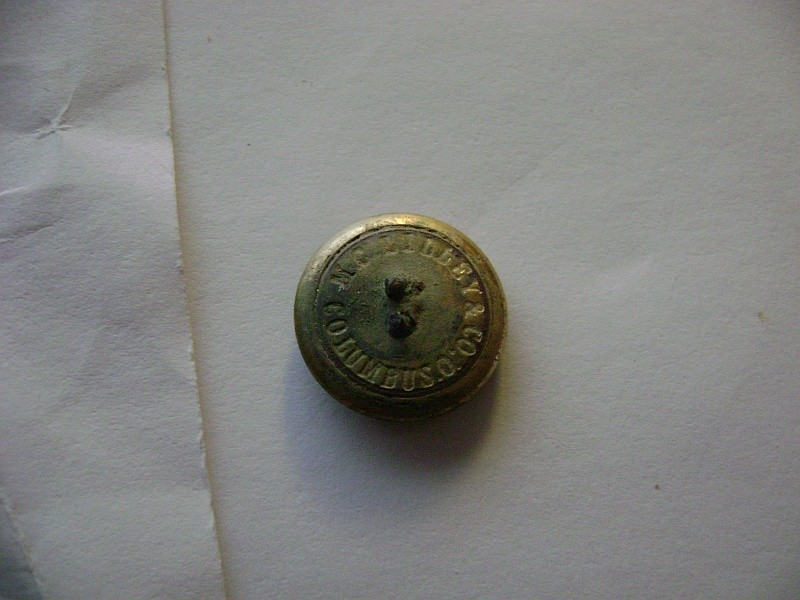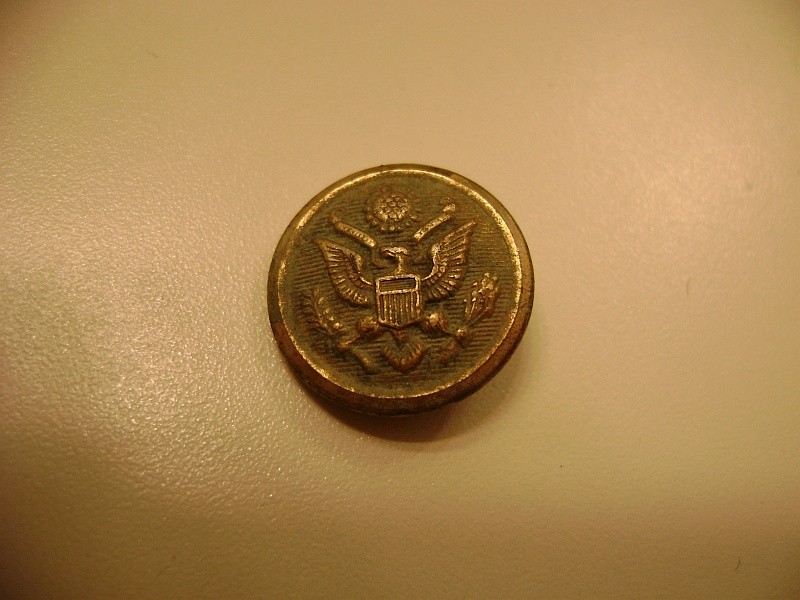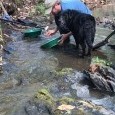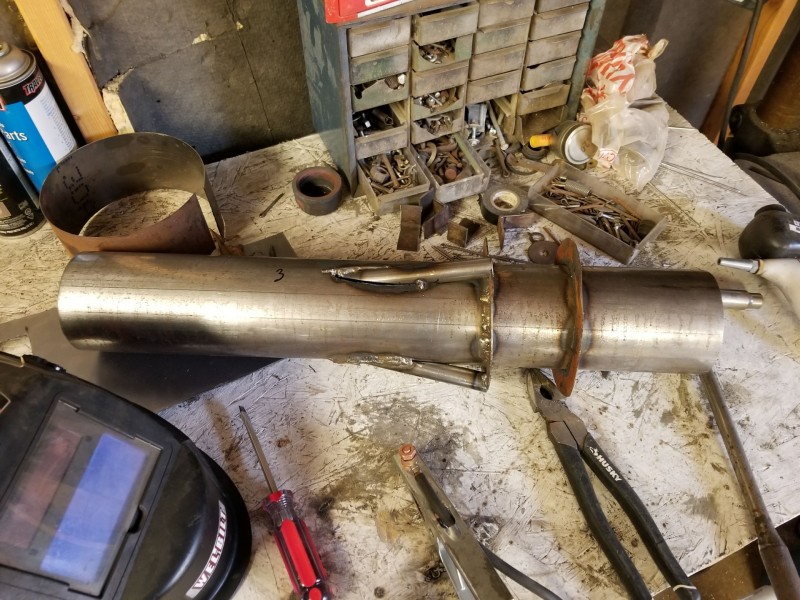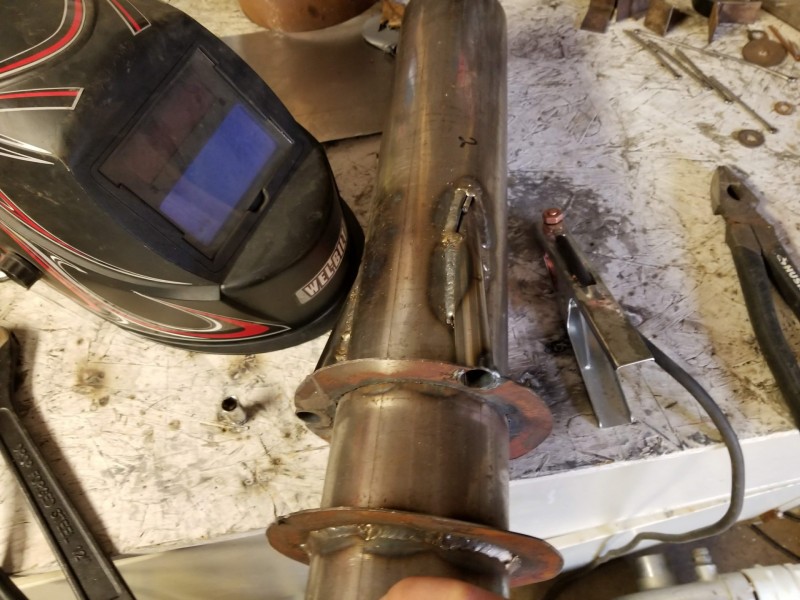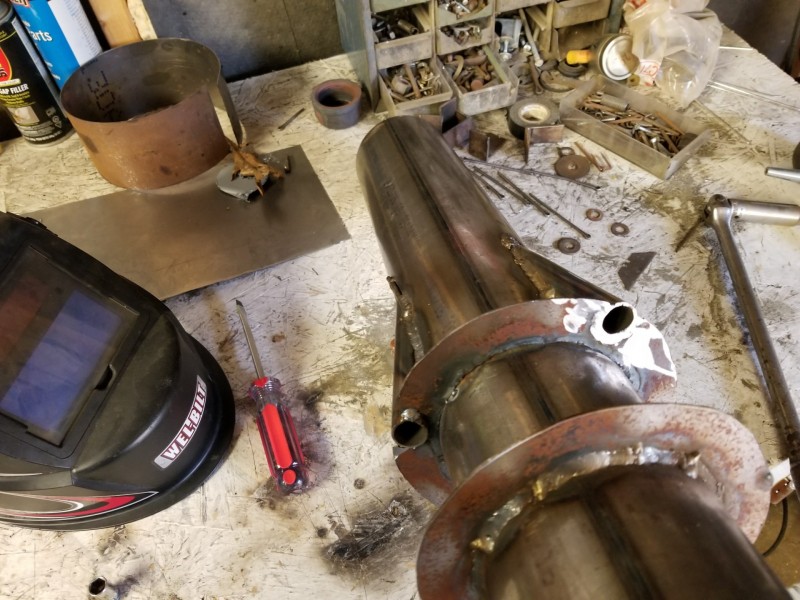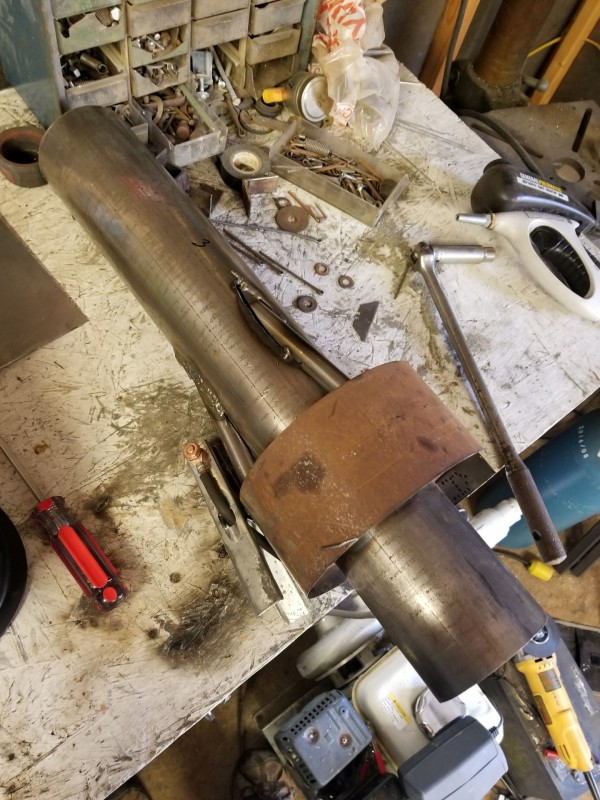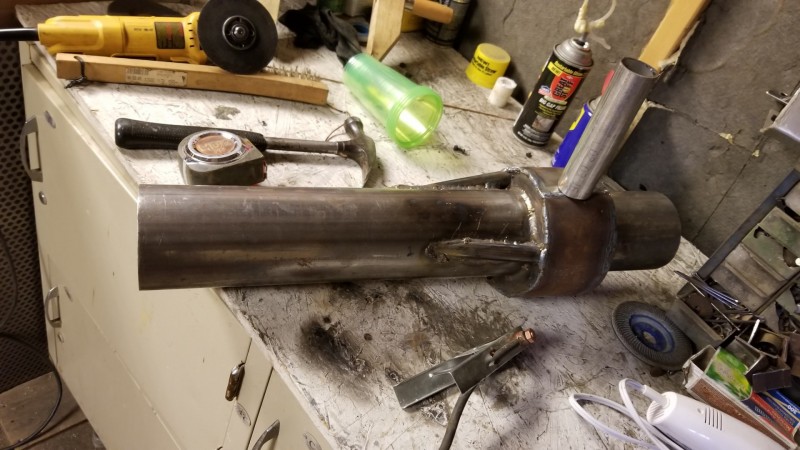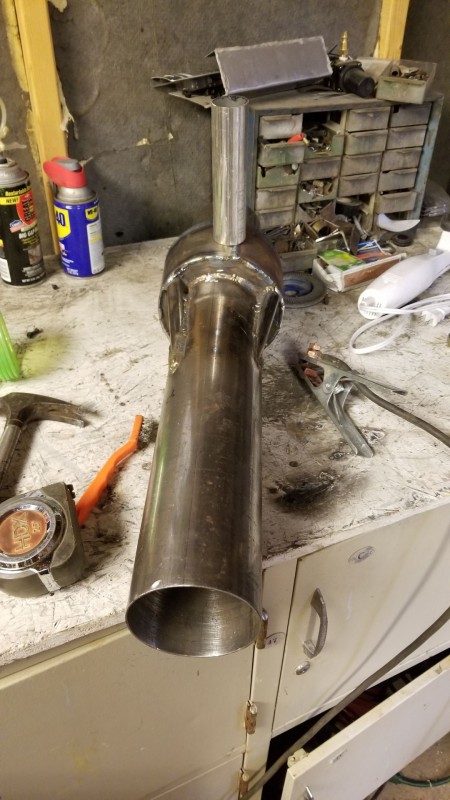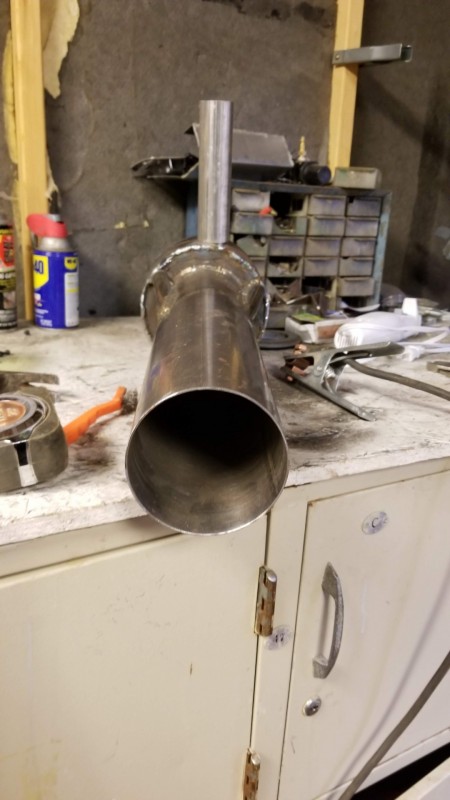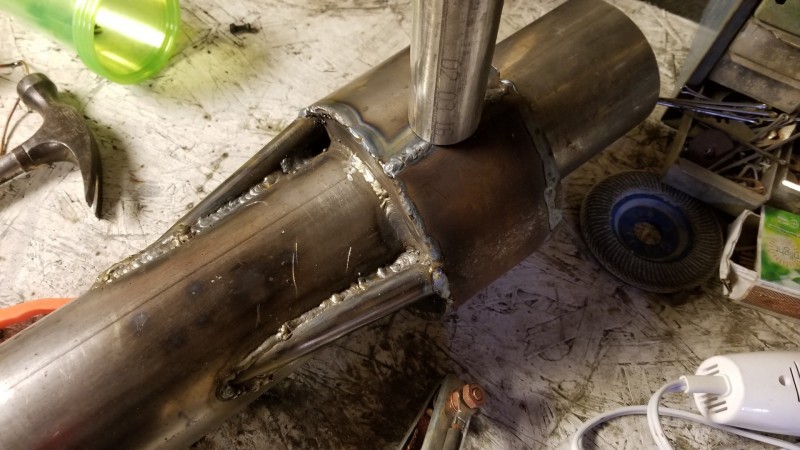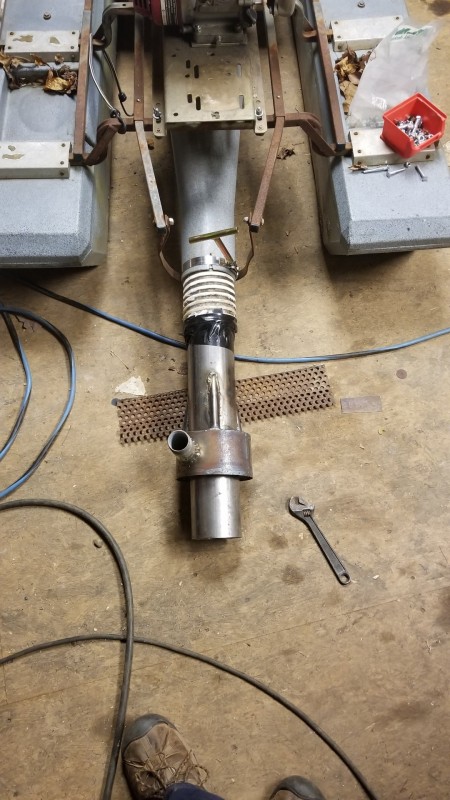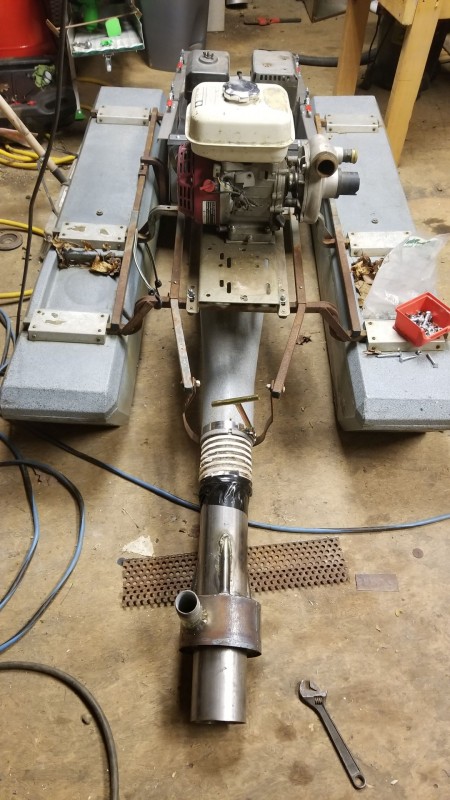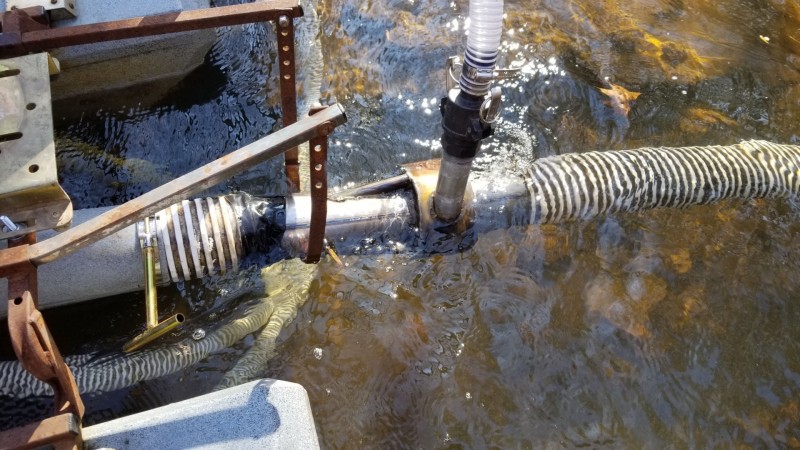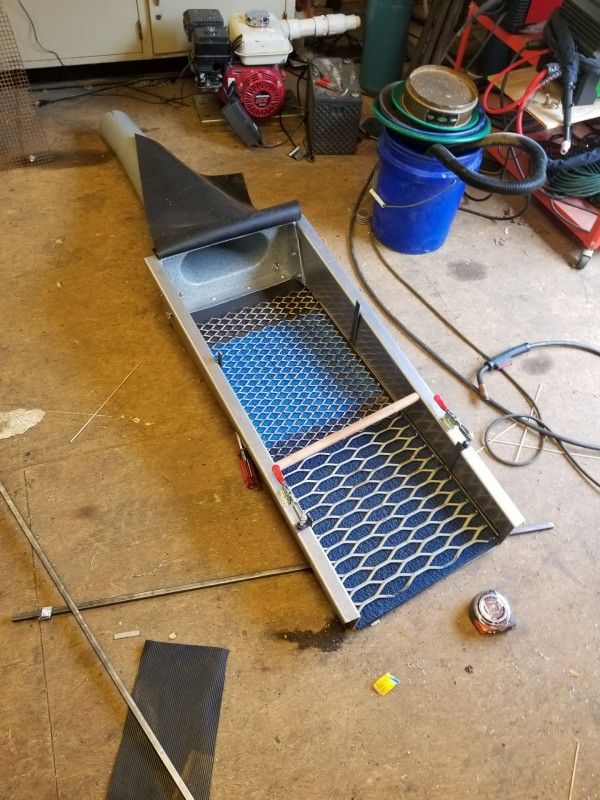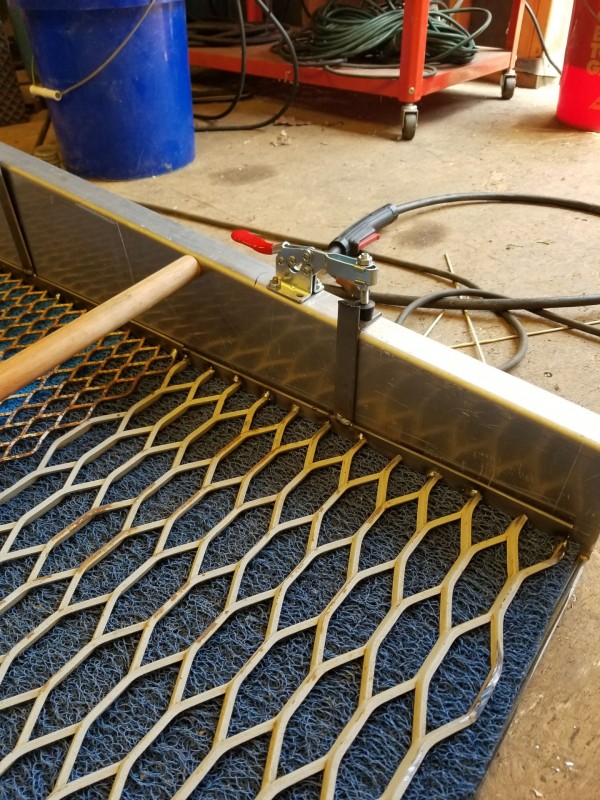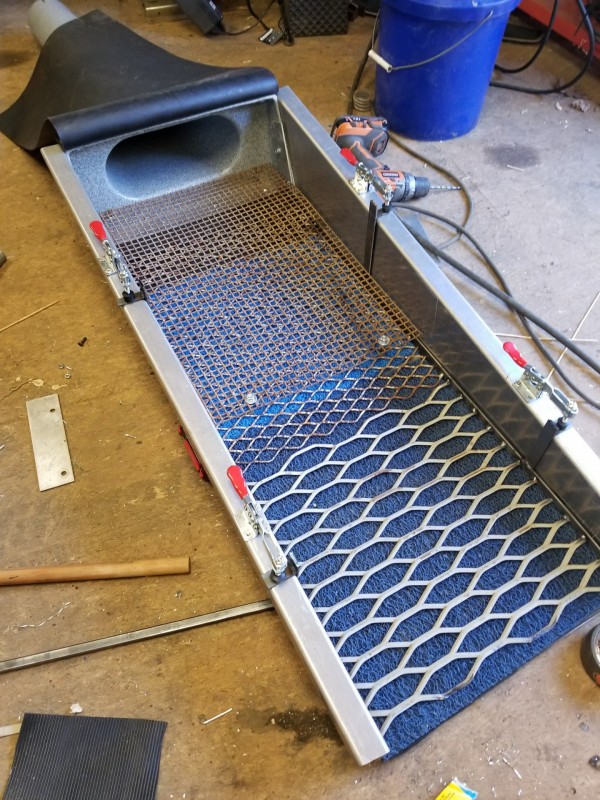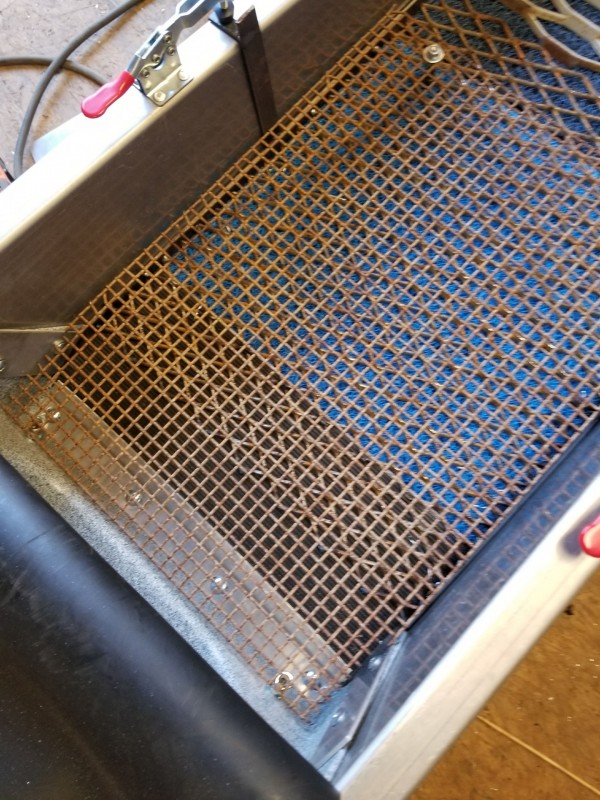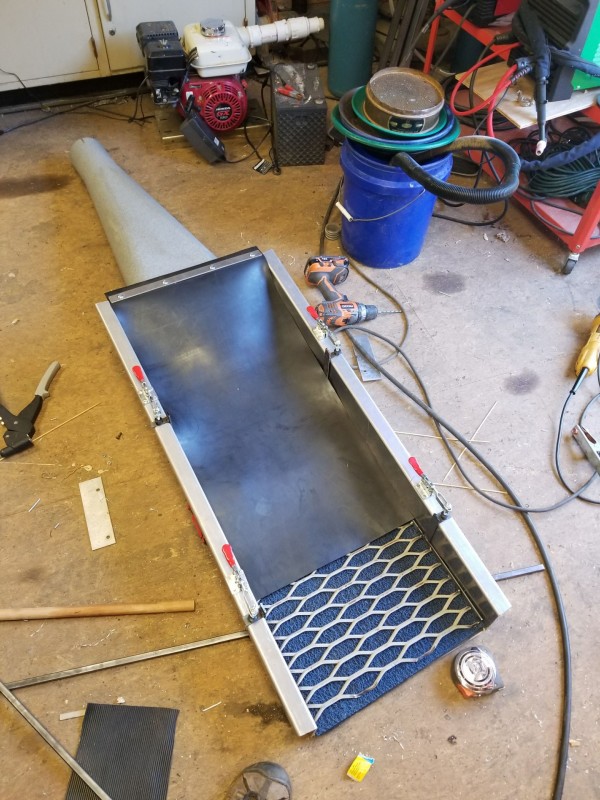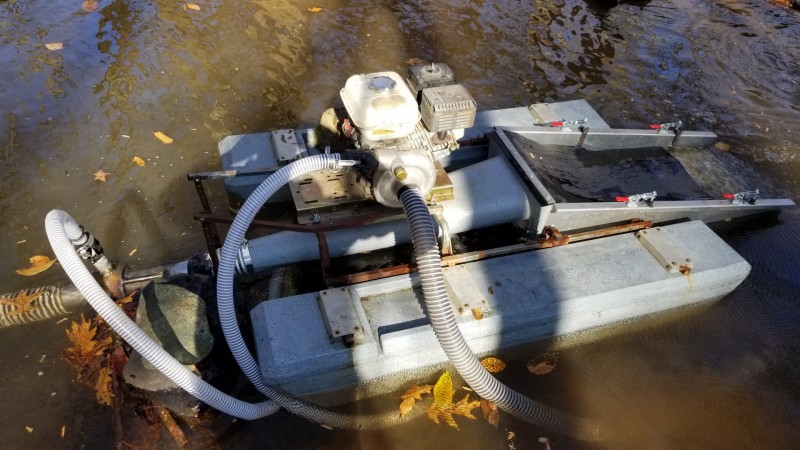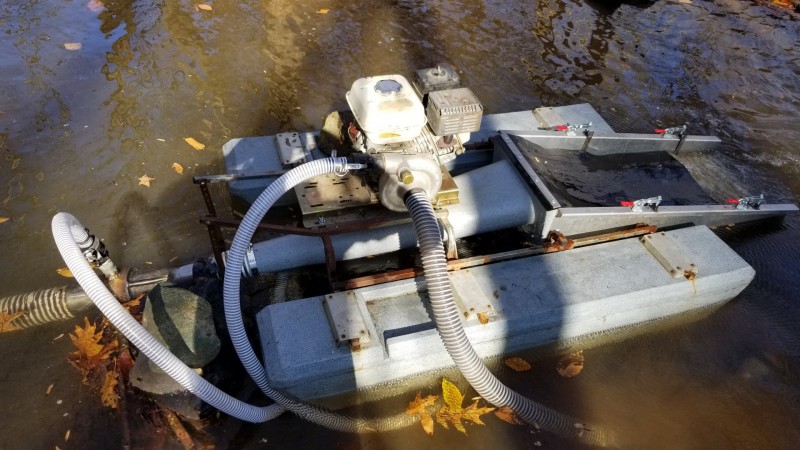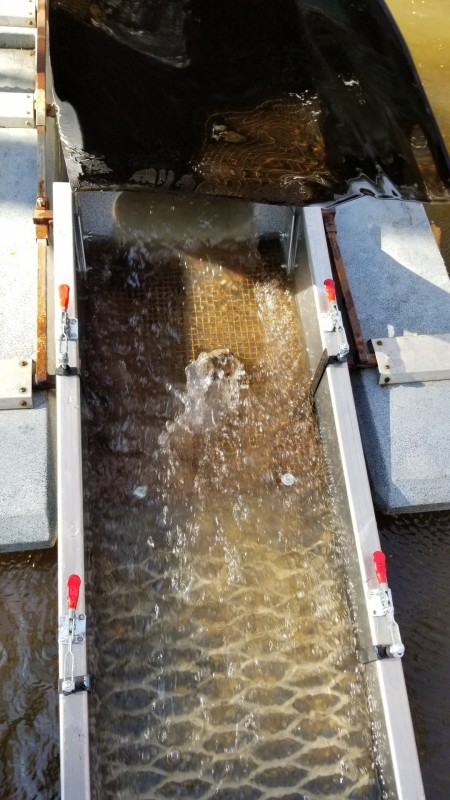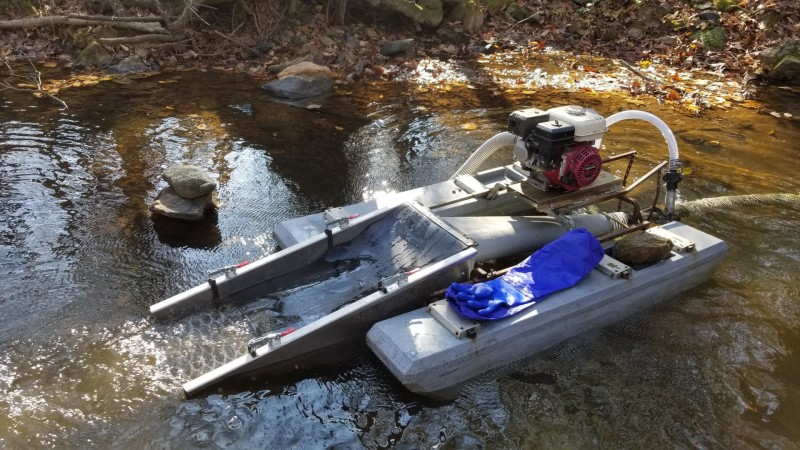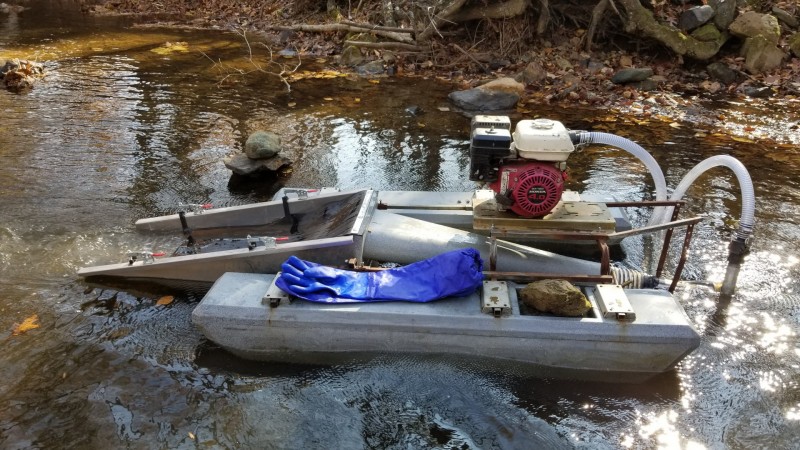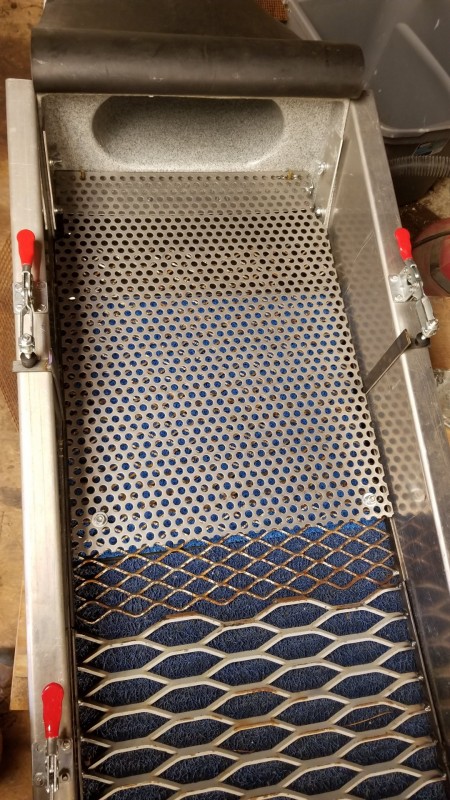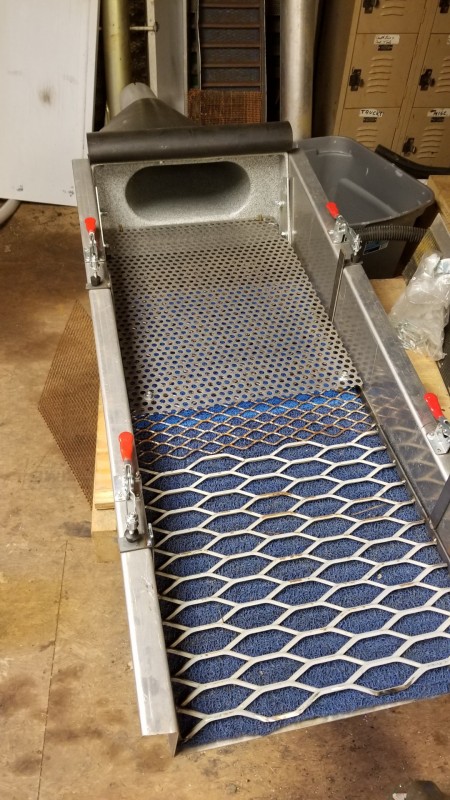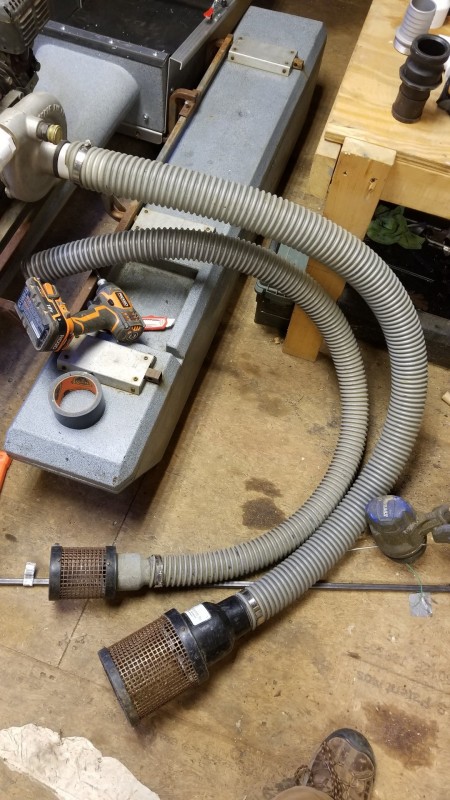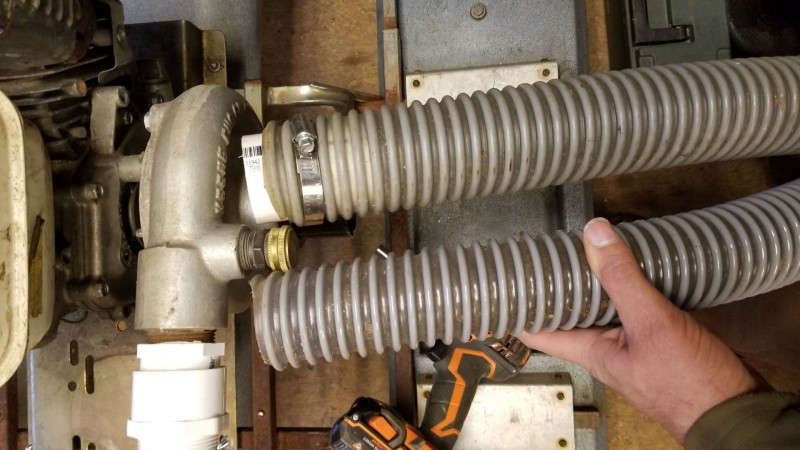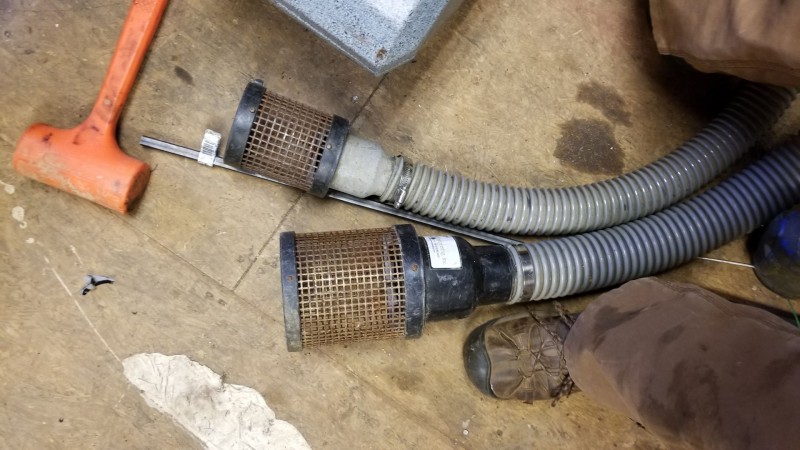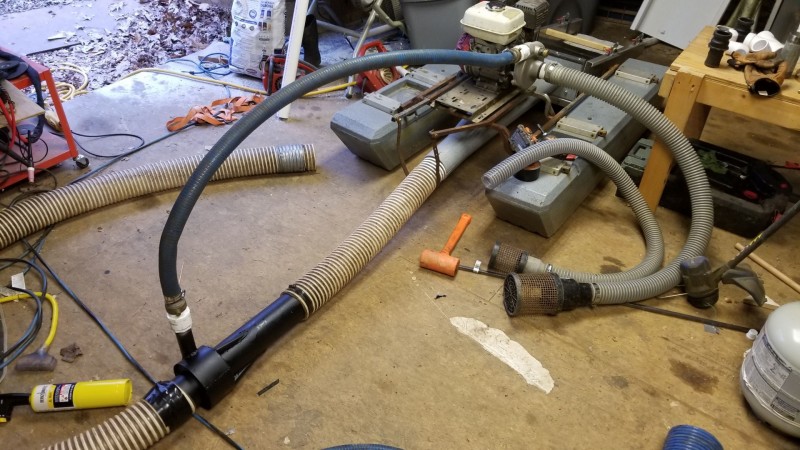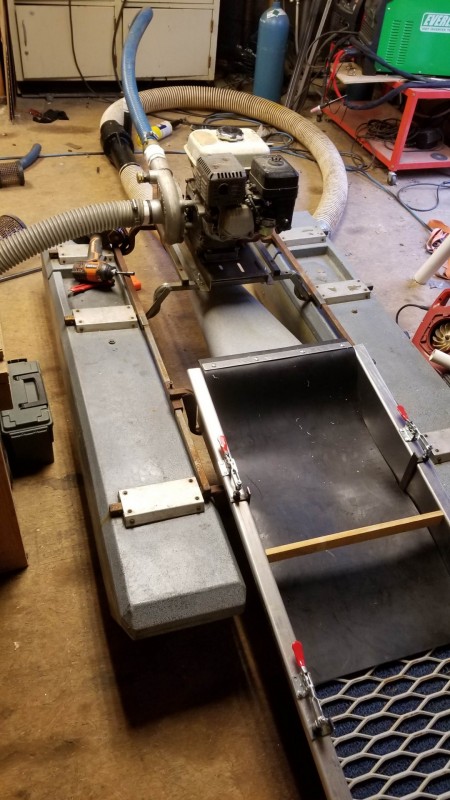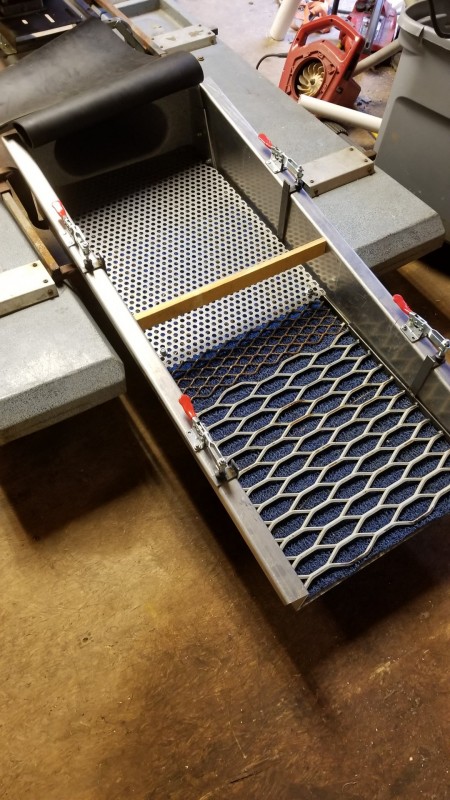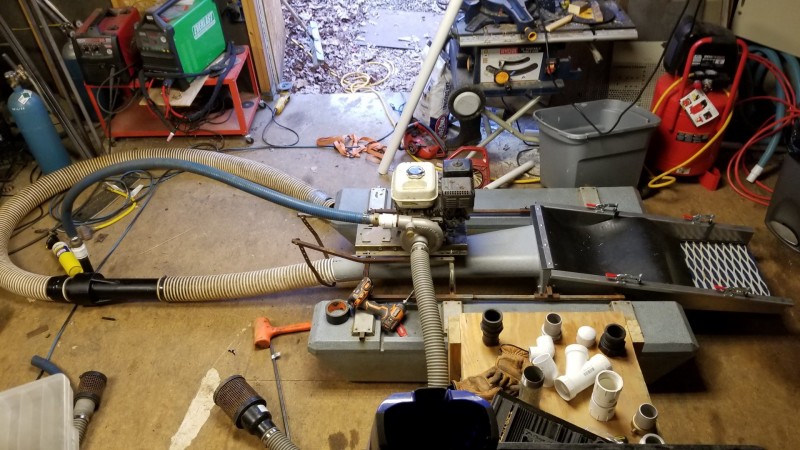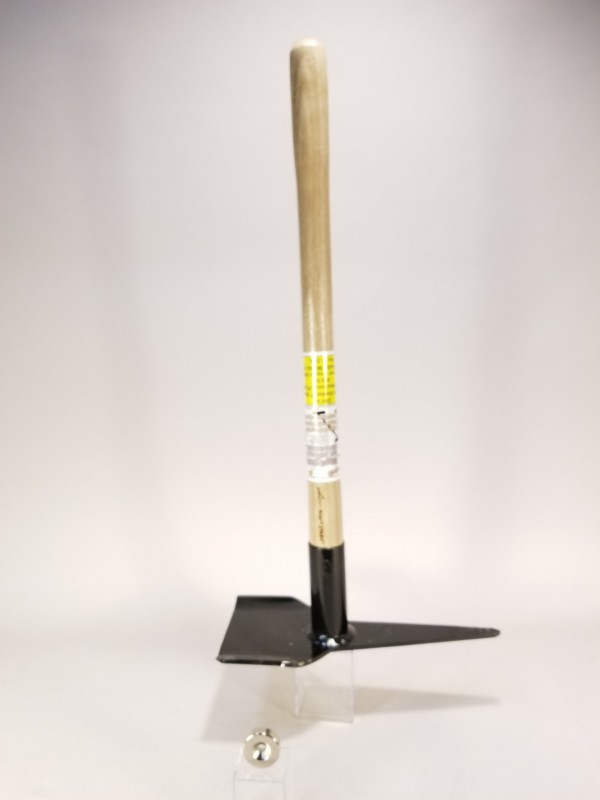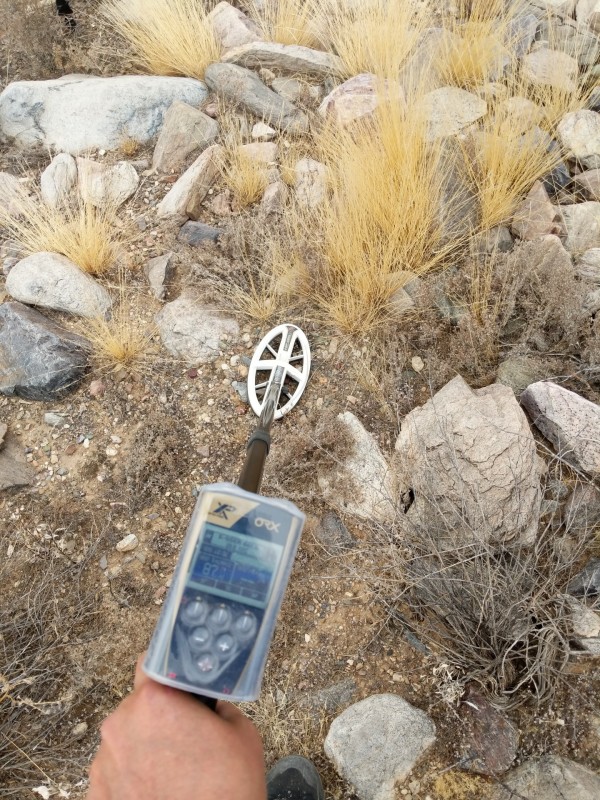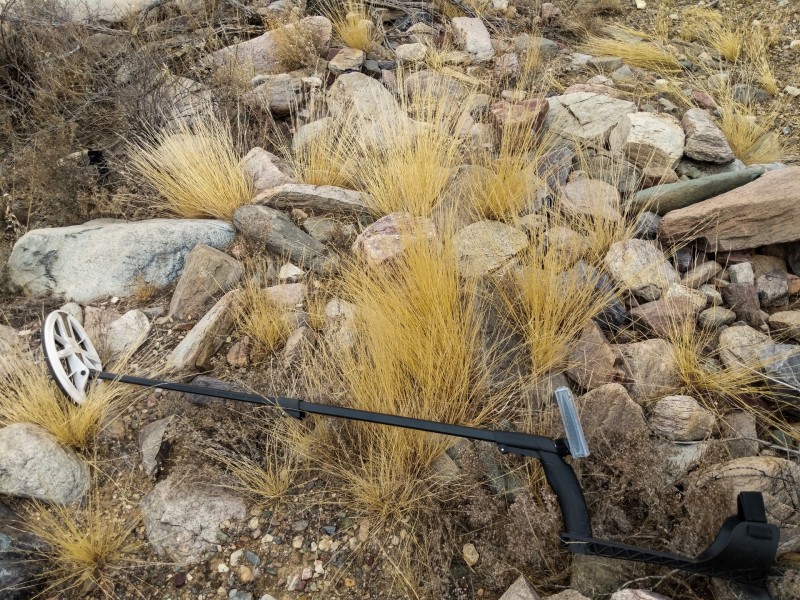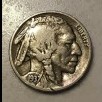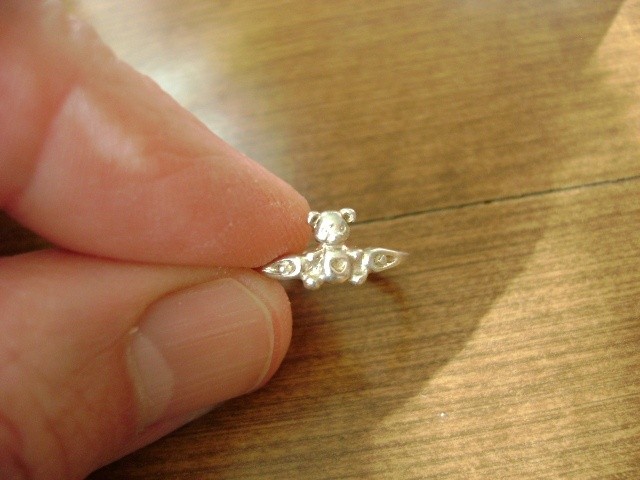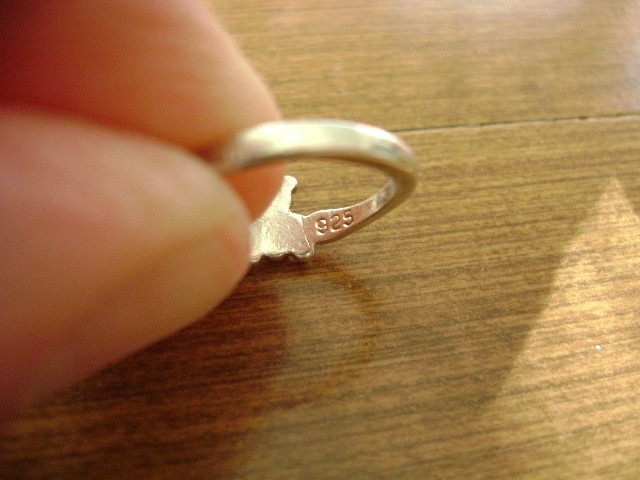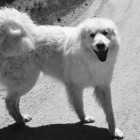Leaderboard
Popular Content
Showing content with the highest reputation on 11/20/2019 in all areas
-
Hey Guys, No question the old patches are getting beat down, even with newer technology. I think at some point, the technology catches up with how deep the gold is really being found. I think the biggest generation of finds was from the VLF to early PI's. I seen more pounds of gold found quicker during this time frame. There was some other decent jumps in gold finds and technology from the SD to GP series and smaller jumps into the GPX. I have done really well on old patches with the GPZ 7000, but at some point I think we start catching up and the old patches just don't produce as much if you're doing pushing with equipment or digging down deeper with equipment in the right locations. Here is one nice 7.8 Dwt piece I just scored from an old GPX patch of mine. Picture isn't the greatest.8 points
-
Had a two story garage/shop/storage loft build overtake my life these last ten months, leaving not much free time to metal detect or fish in my newly adopted state of Oregon. Well that has been happily concluded with satisfactory results. The Eugene club (55 miles from me) got an invite to hunt a County Park not usually open for detectorists under the conditions they provide proof of all the trash they collect at the end of the hunt. Well that could be arranged very easily and the club got all it's members to show up last Sunday to this park and we had at it. I have to say I haven't touched my 800 for quite awhile now and was really concerned I was not going to know how to operate it again. I basically just wanted to get back into digging all signals and re-train myself again on the positive signals. I always liked hunting in all metal with the X-Terra and sorting out all the signals, so that is what I did this trip. This particular park is not that trashy and has pretty mild soil anyway. I have the 15" coil and started with that one for the first two hours. Most coins were no deeper than 3" and very easy to pinpoint with that big coil. I was only using a handheld digger while most others were using long handled spades. I can see using long handled spades for deeper coins, especially if using the 15" coil because pinpointing would be getting a bit harder then. By lunch time I changed to the stock 11" coil and did much better hitting the two rings my first two targets. Don't ask me the numbers because I was hunting in all metal and I don't really look at the numbers anymore. Since we were also looking for trash I was pretty much digging all targets good numbers or not. By days end, maybe five hours the club had a nice haul of pop tops, cans, slaw, nails, general trash to make the County happy and secure another invite back at another time. A good days work and a needed re-training day for me. At the end of the day I felt I hadn't forgot that much, like I had thought. Muscle memory is a wonderful thing. I ended up with 36 coins, a mood ring, a possible silver ring (not marked), a flying brain pin back, a button, a set of house keys, and a gold colored (CORO) 1960's costume jewelry necklace which gave me a heart attack when I saw the brief glint of GOLD. GaryC/OregonCoast4 points
-
Entry level detectors are important. I myself entered this hobby in December 2003 with a $99 Bounty Hunter Tracker IV. I was going to spend the coupon on either a new fishing reel or a new backpack, but the detectors caught my eye and decided to redeem my coupon on the detector. Dick Sporting Good never got any stock in to ship my order and I used the coupon on fishing stuff in the end....but.....the seed was planted and in January of 2004 I bought the Bounty Hunter Tracker IV from Kelleyco. And I have been like a fish on the line every since then. The 3300 is a fantastic deal for 99 dollars. The F2/F4/ 3300 are basic George Payne designs. HH Mike3 points
-
3 points
-
This a great topic with many lines of discussion. I like the stability of the compressed range and for me it is more about the audio anyway because the tonal nuances tell me more about the nature of a target than a number on a screen. So if we are talking single number VDI, I am ok with less is more. People fool themselves into thinking that a metal detector is a precision instrument. There are so many variables and variations in material properties that can result in disparate targets showing up with the same VID just as there are so many variables that can make almost identical targets show up with disparate VIDs. The detectorist needs to integrate the visual and the audible as well as how the target signal behaves when the coil is manipulated to make a dig decision. That being said, I am all for having the detector give me additional USEFUL visual information to enable a more reliable pre-recovery ID whether that is graphical imaging or even the 2-D target ID numbers (Ferrous/Conducitivity) used by ML FBS machines such as the eTrac and CTX. Perhaps a future Multi IQ based machine with the sophisticated ID and discrimination pattern features of these high end ML detectors will follow Vanquish.3 points
-
Let me start of by saying I heard about and saw some pictures of hugh silver and gold found in Arizona. If I find a link or the discoverer wants to post up his pictures I'll let you know. This find is not about that. This find is about a couple of good weather days in Arizona near Wickenburg if you follow on the map. I went there because of Bill Southern's outing that was very well attended. He'll have some pictures on his forum which I'll try to link here. https://nuggetshooter.ipbhost.com/topic/34683-outing-pictures/ Minelab America was there giving away something to everyone who attended and they also had a raffle which benefited AMRA to the tune of $2700! This was near the second day and where the nuggets were found. This first picture is a panorama of the area where I went the first morning. It is near a GPAA claim was a nice specimen was found last month. As you can see the desert is not really dead. It has many living plants and animals. The fallen cactus is a saguaro. You normally only see it standing with its green skin but inside it is an engineering masterpiece. It is made of many rods that give it strength. The next set of pictures is of the cactus that makes cowboys strong and forget about pain. These are the jumping cactus that get you over and over again. I finally dug a hole but it was hot ground. If you enlarge these pictures you will see in the picture some wild burros. There were about 10 with a couple of black ones. The next day we stopped by an old mine on the way to a different claim. Chet got us near and then we went off a less travelled road and we had to turn around. This is him coming out. I didn't take my phone detecting this time because it lost power trying to find a signal. This was the claim where Chet found a nice 2 g nugget and I found the .25 g nugget. These were my pictures on the way out at the end of the day and before my 6 hour drive back to Santa Monica. I took a couple of bad picture of the nugget this morning with the phone. It makes me want to get a better one ... nugget and phone that is!2 points
-
How many times have you swung the Equinox over a sweet sounding quarter coin tone only to discover it was an aluminum can? There are some tonal nuances a trained ear can tell the difference side-by-side in the ground, but it is even hard for a trained ear to tell the difference on widely scattered targets in a field or on the beach. And you certainly can’t get a good handle on the target footprint with the processed search mode tones. Pinpoint mode to the rescue. Since pinpoint is a non-motion mode (vs. normal detect mode which requires you to keep the coil in motion over the target to register a target tone), you can use it to quickly ascertain the relative size of shallower high visual or tone ID targets to give you an idea whether you are swinging over a coin sized object or potential junk with a much larger footprint such as a beer can or large falsing iron target (e,g., horseshoe.). This is accomplished by tracing over the target with pinpoint engaged. The larger objects will invoke the high pinpoint tone over a much larger footprint area than a smaller coin, ring, or button-sized target as the pinpoint tone rapidly drops off as the coil center crosses off the edge of the target footprint. This method becomes less effective for significantly deeper junk targets as the relative pinpoint signal strength "footprint" shrinks even with larger targets as their depth increases (you can simulate this by lifting the coil off the ground while tracing something like a beer can). You will probably dig the target anyway just to be sure, but at least this way your expectations are properly set such that you will be pleasantly surprised if it turns out to be a keeper rather than the other way around. I personally use pinpoint more for target tracing, when I am in doubt about the true nature of a good sounding target, rather than going to pinpoint mode for pinpointing, because I can pinpoint pretty effectively by wiggling off high probability coin-sized targets.2 points
-
Dear Digsalot, Glad to have your feedback. As with everything, everyone has different opinions about what they like and what they don't. I'm not going to get too involved in explaining why I designed the pick in this manner. I value all criticism and opinions because after all, all opinions are valid, and they will help me make better products. I used the pick on an outing for the first time last week. I was very pleased. I designed this pick based on things I want in a pick. But what I want, may not necessarily be what the masses want. The sharp blade that you mention could develop nicks??? Under no circumstance should you ever use the wide blade of the pick to hack at the ground, so I assume that is not what you were doing. I always use the pick end to break up the ground and the wide blade to pull the dirt out of the hole. I know I sometimes have to fight the urge to use that wide blade to hack at the ground. The purpose in having the sharp edge on the wide end is to deal with dead brush that many times get in the way of recovering a target. I detect a lot of nuggets that are close to or in bushes that line gullies. Being able to clear that brush and get my coil over the target is a plus. I do agree that I think the blade is a little too sharp, but man does it clear the brush. I do take exception to your statement. " I was going to special order picks like this from Australia from the original designer." I am the original designer! Yes! I am the original designer of the WALCO pick with bent edges from S.H. Wallace in Australia. At one point in time I was the major importer of WALCO picks into the United States. At that time they offered the W1 and W3 pick. The smaller one was shaped like a piece of pizza, and the other was larger with a spike on one end welded to a wide blade on the other end. I told S.H. Wallace that I wanted them to make two picks that were basically the same size, but I wanted the wide blade to be shaped differently with bent wings to enable more efficient dirt removal. They complied with my design request and I dubbed these picks the WOMBAT picks. I still have the emails from November and December of 2004 where I am giving them instructions on making the blade wider, and then finally to bend the edges in. December 9, 2004: "Can you call Cliff at S.H. Wallace and ask them if they got my email back to them upping my order of picks in the new design, and whether they can bend the edges in a bit ? Thanks! Doc" The bitter truth is that WALCO makes amazing picks, but they could not keep up with my demand here in the U.S. I remember the first time I ordered 300 picks, and they asked, "Mate, what are you going to do with 300 picks?" LOL They were having problems getting the number of handles needed to fill my orders. I personally found the handle on my new Nugget Stalker pick very comfortable, but I may not be a good judge. I'm a little guy, 5'7" with small hands, and wear a 9.5 shoe.... no jokes please! So for me the handle feels good. I grasp it right in front of the end of the handle where it gets larger. That larger end gives me the feeling that the pick will not slip from my hand. How did you feel about the weight? It is one of the lighter picks I have ever designed. It comes in right under three pounds, which is significantly different from the prior pick I designed which weighed almost 5 pounds. I am wondering whether the pick point seeming to slide to the side is a product of the pick point, or the lack of weight? As I said I am going to be very interested in how your modifications affect performance. Fortunately my pick is made in the United States and I have complete control over modifying the design elements, including the grind of the blade shaping the point and the way the handle is made. I hope others will be as thorough in testing this pick and offering their input. It was 1990 when I designed the first commercially available prospecting pick. Up until that time everyone was making their own with their trusty welders. However if you were not fortunate enough to know how to weld, you were stuck trying to use a Estwing pick, which were woefully inadequate. I really do appreciate your in depth critique. I know it takes a lot of time to do a write up like this, and a lot of thought. I look forward to hearing your evaluation after you have done your modifications. My first run of picks was only 200 pieces, so there is always room for improvement. Thanks again for the thoughtful evaluation. Digsalot,, Listen if you need another pick to play with modifications, let me know. I would only ask that you share with me the results, good or bad that you experience from modifying. Doc2 points
-
Hey Guys, I have to agree, the NF Sadie has always been an all time favorite for bedrock hunting, working around objects and shallow ground. The Coiltek Joey 10x5 Mono prior to the NF Sadie was the all time favorite and most popular small coil back in the late 90' thru the mid 2000's. Both of these coils are still available from us, NF Sadie 8x6 Mono and the Coiltek 10x5 Joey Mono. The new NF EVO 12x8 is great, especially on the GPX series. I think this is where most will find the greatest advantage, but works great also on older PI's, SD's and GP's. A lot of time it comes down to preference of the user. There are great coils out there, but at some point you have to make up your mind on what you want. I recommend a small coil for bedrock hunting and tight spots, then a mid-sized prospecting coil like the 14x9 or 15" Round, then a large coil for very deep areas or covering large amounts of ground. I have always been a 3 coil guy, small, mid (95%) of my use, and a specialty or larger coil for here in the US. I don't believe you need every sized coil on the market. This year alone, the NF Sadie has been the hottest selling small coil here in the US. The mid size coil is the 14x9 elliptical (Coiltek or NF) hands down. This has always been the hottest selling coil size since the PI's hit the market here in the US. Rob2 points
-
Chase, I could NOT AGREE MORE with the first part of your post, that I bolded. Spot-on, iMO. As for the part that I underlined, I am ALSO hoping for 2-D target ID numbers and smartfind screen (or something similar) for Minelab's next Multi-IQ unit. Obviously Minelab has now covered the "lower tier" of the market, with the Vanquish, and they have the "middle tier" well-covered with the Equinox. SURELY, a high-tier, "flagship-type" unit based off of the Multi-IQ technology platform, must be in the works at Minelab...and FE/CO numbers and smartfind screen would be a VERY welcome inclusion, on that unit, IMO... Steve2 points
-
50 numbers of equinox IDs are sufficient .. for normal search .., here is more important accuracy and stability of ID in deep and more difficult terrain .., Of course, I would have liked if Equinox had the ability to set more in some programs for extended ID range on lower conductors, and more narrow ID range on high conductors. PS .. Equinox ..possible in next Update...2 points
-
I decided to hit a hammered colonial site where the last several times there with the Nox 800 no significant non-ferrous items were found. Every couple trips I might find a cuff button. So was running the ORX with 9” round hf coin in coin fast 28khz, but switching to coin deep at 54 kHz., reactivity 3, sensitivity 94. Found 1792-1812 period American naval button ( undetermined variety as yet). With 13 5-pointed stars and Philadelphia back mark.Also found cuff link, outside of large 2-pc ball button. Thesewere all found within 45 minutes, and other targets were going to be found for sure. I’m totally impressed with the machine. So much so that last night I ordered a 9” XP X35 coil, because folks? The XP ORX is a keeper with a long future. Deepest target ( squarenail ) at 1 1/2. Punpointer lengths. (15”-16”)1 point
-
I think Minelab may have pulled the extra early intro trick one time too often. The machine is not supposed to actually be available until sometime next year. In the meantime the Nokta/Makro Simplex+ is actually shipping, stealing the thunder. The gap between announcement and actual shipping dates on Vanquish is so large that people will have almost forgotten about it by the time it's available, or at least it will just be old news. It seems to me Minelab is squandering a certain amount of excitement that results in people making quick impulse buy type decisions. Given too much time people calm down and find reasons not to buy. I can't say I am a big fan of machines being announcement way before they are available. Hopefully the trend reverses. It may be Vanquish proves to be the time it went to far and we we go back to manufacturers keeping a better lid on things until we can actually buy them. Minelab Vanquish 340 Data & Specifications Minelab Vanquish 440 Data & Specifications Minelab Vanquish 540 Data & Specifications Minelab Vanquish 540 metal detector1 point
-
Detected a stretch of a river that had some erosion on the banks and sand removed down to the gravels. I dug up many coins including a buffalo nickel and a silver dime that someone was going to make into a ring. The best find was a 14k ladies ring 3.1g (not a genuine stone). Also dug up what looked like a white gold ring turned out to be stainless steel. The tarsacci has good recovery speed like the T2 worked great in the trashy area with broken pieces of rusted old steel cans, bottles caps, bits and pieces of iron along with all the newer junk tossed into the river. The tarsacci worked better than my T2 it found targets in a area I couldn’t use the T2. The 2 wheat pennies were dug up at a old park 6-7 inches deep. The tarsacci goes deeper it’s just that my ctx did a good job sniffing out most of the oldies at this old park.1 point
-
I think that pretty well says it. It's not an Equinox and never was supposed to be. It's a new minelab entry level machine with the main thing that made the Equinox special....multi IQ. The ability of a machine to see coins others miss. Not necessarily deeper just better vision. It Will be very interesting to see it in action when it gets in the public's hands and goes through their test gardens. Segments and notching...25 segments on the 540...50 on the Equinox. So a segment will be more than 1 number. On the 540 perhaps it's 2 compared to the Equinox's 1 Deep? I expect respectable but it may be deep or the depth could varry depending on the model. It's not an Equinox. For people wanting into a fun hobby without breaking the bank and swing a machine with multi IQ. I think it could be an awesome little machine. But only time will tell!!! HH!! Tom Minelab Vanquish metal detector Minelab Vanquish 340 / 440 / 540 Technical Specifications1 point
-
Book Excerpt: 14/ Modulation Modulated audio acts to reduce noise and response irregularity in a high gain audio platform. That’s a lot to manage. Modulation defines each tone and makes all signals sound better and more the same. This also represents an artificial, distorting influence--a kind of audio “no-man’s-land”where small objects sound bigger and large targets are “clipped down.” This is especially true in the “tone ID” modes. For the operator, modulation makes it harder to tell a deep faint response from a small surface one. In conjunction with Gain, modulation makes small responses more distracting--sounding fuller and more solid. Modulation also makes tiny mineral, seabed or black sand variations jump way up to sound more like good signals. Determining a response’s shape and distance from the coil are also harder. What you have is a digital representation of ground and targets--more of a measure of the relative differences between the two than an actual metal object reading. Another consequence of this is that big targets sound smaller--cans--sunglasses--all are modulated to often sound like they are (more) coin or jewelry-sized. I’ve had some particularly frustrating deep-water hunts with the Equinox giving tantalizing small indications on what turned out to be super-deep “rotten glasses.” This operating characteristic can be confusing for new hunters. This, in particular is an Equinox operating characteristic that is easier to make sense of and manage with some solid, basic instruction. For anyone--the “trade-offs” that derive from the Equinox’s heavily modulated signal are its most frustrating feature. 1/ The first, most basic method of managing a heavily modulated signal is to turn the volume down. Even going to “24” or “23” makes a huge difference. This makes for more audio distinction between weak and strong signals. Many CTX hunters discovered this after becoming frustrated with that detector’s tendency to bring up tiny conductors. With its high frequency weighting on several of the pre-set modes this is more so of the Equinox. While many of the underwater headphones that are available are quiet to begin with and don’t allow much of a margin for reduced volume--the stock 800 series wireless set do. 2/ Focus upon the more solid signals. This is a critical Equinox skill in any context. Even as a pulse hunter who has experience with fast Delay machines that hit running shoe eyelets loud and clear--the Equinox was initially exasperating to use for me because of these modulation-boosted targets. While I see some patient hunters getting good results “micro gold” hunting this is at highly specific types of locations. The solution is simple basics. Rather than digging endless tiny part-responses--use Pinpoint to check for solidity--and do a quick angled pass to see the consistency. (See “Pinpoint” below). With practice these small conductors will become more obvious in Discriminate as well. This is the way to offset the distortion of a modulated signal--but still get its benefits. This is where the above mentioned “correlation” comes in--looking for “sets” of target characteristics to double check what the audio is telling you. Even when examining tiny “earring-sized” sounds it’s possible to screen for solid targets and use this as a basis for gathering a full target profile. Each signal feature (size, strength, solidity, position in strata…) should confirm the others. The depth meter is also a good tool for offsetting the distortion of modulated audio. Signal depth and signal strength should be “in keeping.” (More on this type of method below). Modulation is more active in the Tone (break) ID modes (especially “5 Tone)” so using the more fluid “50 Tone” or just “Pinpoint” are good ways to compensate. One reason that many hunters have trouble adjusting to the Equinox is that again, this high Gain / high frequency / modulation combination reduces your ability to judge how far from the coil something is. This in turn throws off your sizing. The number of hunters I see on “YouTube” videos trying to ignore these simple target testing basics is laughable--with many trying to pass off this as some cool “dig everything” ethos. Again--not “everything” is “anything” and a machine like the Equinox will tell you when not to dig sometimes--loud and clear. From "Skill Building with the Minelab Equinox Series Metal Detectors" by Clive James Clynick (2019)1 point
-
I hit a site today that I had hunted many years ago and asked if it was still ok. I found this button. The color is golden in most areas. on the back of the button there is writing. It says "M.C. LILLEY & Co. O. COLUMBUS" best I can tell. I'm afraid to clean it too much for fear of damaging it. Found with my Teknetics T2SE and Cors Shrew in a very iron contaminated site. Also found old square nails too. While I will not tell specifically where I found this, the place was a Farm since 1854.1 point
-
Been messing with this project on and off for a few years now. Finally got it where it was ready to be tested this past weekend. Was originally a keene 3 inch with 4 hp motor and p160 pump i believe. I sold off most of the 3 inch parts and started building the components need to turn it into a 4 inch. From the 3 inch all that remains is the frame, floats and motor and pump combo. I bought a 4 inch flare from keene, since i have no good way to fabricate a lightweight flare. Everything else i have been working on fabricating, primarily being the sluice (16x40), riffle trays, and the power jet. The power jet is were i diverged from most of the current designs that are widely used. I wanted to build a 4 inch as light as possible while still using the 4hp motor and pump combo, as most the streams i work are shallow and dont require huge amounts of suction for dredging at great depth. The problem was that the 4hp motor and p160 pump struggled in my mind to provide adequate suction to the 3 inch even when near full throttle. Based on this i decided to build a copy of a dahlke tri-jet which should allow a 4 inch to be run off of a smaller motor and pump when compared to a normal 4 inch, due to increased efficiency over a standard style of power-jet. Pictures of the tri-jet in various stages of completion: Picture of the sluice and riffle tray, first iteration with woven wire: Testing day! Couple of issues were noticed while testing. There were a few leaks in the power jet, the woven wire was too open and large rocks would get stuck on it, the high pressure hose was way too long and since it was inch and quarter and so is the pump output , it was constricted to less than inch and quarter at the coupling areas, and the long high pressure hose probably caused a loss in pressure due to friction. The power jet should also be mounted not right at the flare but a few feet from it, so that the hose acts as a longer jet tube and helps increase suction, a 20 ft suction hose also didnt help. But regardless i was able to dredge with moderate suction, with it. So the test was a success, and with the various refinements it should have greater suction and water flow. Then the next day, the various refinements and fixes from the problems noted during testing. Replaced the woven wire with 3/8 inch 40% open punch plate, moved the jet so it is mounted about 3 feet from the flare, shortened the high pressure line and increased it to 1.5 inch so there are no restrictions, patched the holes in the power jet, and painted it. I do have a question or everyone, would increasing the size of the footvalve and intake hose from 2 inch to 2.5 inch help increase the gpm of the pump at all? The footvalve cage that came with the keene pump seems small to me. I have some pictures below showing the difference. I look forward to hearing from everyone! It was a fun project!1 point
-
$1539 is what I paid. Equinox is very good detector but I already have a ctx 3030.1 point
-
Adam, The next time you go prospecting or fishing just stay at home. https://www.crookwellgazette.com.au/story/6495003/mining-company-explores-tuena-for-large-gold-deposits/1 point
-
1 point
-
Rob, Actually I didn't know much about the area. As far as I remember, that is the first nugget I've ever found at LSD or SD or Stanton for that matter. It was my first time to drive up that far. You guys have not shared your secrets with me. haha My best find until that nugget was a pocket watch case (without the watch) that was found more north and east of Jackass Flats than this area. Mitchel1 point
-
Thanks for the commits Rob. I just wanted to give a fair review. I am not bagging on the pick. It will replace my current apex.1 point
-
I think they just want to see that we did promise to clean out the trash. It was only sent to them in a picture, not physically! I don't believe many people believe how much garbage is below the surface of those freshly cut park lawns. As detectorist we seem to be the only group of people who are obligated to prove our right to use the parks for our hobby. At least that is what I have come up against when talking to some park personnel. I should have posted that picture we sent the Eugene parks department (big error on my part, as I don't have that photo). It was probably in excess of ten pounds of stuff. GaryC/Oregon Coast1 point
-
Hey Digsalot, Thanks for the honest comments and business. We very much appreciate both. Doc and I are very close, known each other for about 25 years now. I will pass this info to Doc so he can get some good feedback. We have sold a good amount of these "Nugget Stalker" new picks. I have to agree, the pick selection in the US is minimal now. I have reached out to several Australia makers, but the cost of shipping is tough to make a buck here in the US unless I'm orders 100+ picks. Doc sent me some more information about them recently -1 point
-
It's taken me a long time to appreciate what Chase says here, even though he's been saying it (repeatedly) for about as long as he's been a member of this site. I missed out on the analog epoch of (quality) metal detectors and it's taken me four years of repeated reminders that digits aren't the be-all, end-all. I will go on one detour, though. Equinox 5-tone mode will give considerable information in tonal qualities. Is it as much as you get in multi-tone? I'm not going to say that because I have no idea, but if you're like me and 50 tones doesn't fit your ear/brain, set the tone breaks in 5-tone to meaningful places and listen to the sweet music. I tend towards dig-it-all (where 'all' excludes iron, and sometimes the low end of the foil zone) so I don't get too concerned with super accurate target ID's. I don't have many bottle caps to deal with since I don't hunt the beaches. I doubt there is a detectorist alive who is good at audible discrimination who hasn't done a lot of dig-it-all detecting. That's what teaches you what tonal qualities are worth digging and which should be ignored. The only detector right now on my radar as a potentially missed opportunity is the White's V3I with all its graphics candy. I love graphs! It's the weight that shied me away, but maybe the balance of the V3i makes up for the extra weight. Anyway, I'm on a detector acquisition 'diet' right now and the longer I wait, not only do the prices of existing detectors drop but so do the choices of new ones. 😉1 point
-
1 point
-
M. C. Lilly & Co. / Columbus, Ohio , manufactured military buttons from 1876 thru WW II. Agree, this looks early 1900's to WW II.1 point
-
1 point
-
I do agree with your basic assertion and I also agree that as you stated in one of your manuals, the upper range of the scale on the Equinox is a wasted part of the scale. If the VID for silver (high conductors) was moved to 35-38, that would allow a more definitive differentiation of lower conductors by simply allowing a more finite definition of the properties of a target. Adding seven or eight more areas (TID numbers) of classification would serve to greatly reduce the stacking of targets. If you are going to stack targets why not stack the good ones and try to classify the bad ones as much as possible? Even so, the Equinox is still a very advanced detector, but nothing is perfect.1 point
-
To me the ID number span has no effect regardless of -9-40 or -100-100. Maybe if you are strictly hunting old coins but I predominately am hunting jewelry and gold can be almost anywhere in the non ferous range and even dipping into ferous with regards to tiny chains and earrings. Asto bottlecaps, that has been debated to no end already but in my experience with the EQX if you use 50 tones, keep the Iron Bias at 0, and have the horseshoe engaged( i.e. “all metal”/iron tone on) the machine makes them an obviously erratic signal indicative of trash. Every once in a while one will give a solid signal in the nickel to zinc range but that is going to happen with any machine wearing a DD coil, just the nature of the beast. If you want to eliminate bottle caps 100% you need a detector wearing a concentric coil.1 point
-
Continuing....Note I am almost always in the Micro operating mode. Regards Micro Jewelry: Per Tom Dankowski, I found a little 10K White Gold 3MM 4-prong stud earring to use as a test target. Note that 3MM is probably smaller than he would recommend as 3MM isn't a big enough stone to make micro jewelry hunting worthwhile, but..if you can you can pick up this particular target you can pick up anything as at this point that alloy and size is more like a mineral target than a metal target. The Gold Kruzer with the little 4x7 coil will pick up my test target at about 3/8" to 1/2" deep in Micro mode. Note that you CAN NOT test small gold with your hand. You have to put it on a wooden stick or something. The Gold Kruzer will respond to your fingers and give a false reading. The 10" concentric and the 10" DD will not respond to this target. So if you are really into true "Micro gold Jewelry" hunting the Gold Kruzer will limit you to the 4x7" concentric coil. Well....you can focus on small yellow gold and do ok with the larger coils but the micro white gold will be out of reach. I typically use the GK61 (my reference) as a clean up detector. For example if I have a good hot spot that I have been pulling good gold jewelry out of, then once I get the trash level down I'll come in and progressively hunt it down with the GK61. First either the 10" concentric or the 10" DD, and if I think it has promise for more, then I'll come in with the 4x7. I use the tone break to focus. The best number for me is 41. 41 has been good targets...open rings, lobster clasps....stuff like that. 43 through 46/47 has been thin/paper foil. Above 47 has been more dense targets.. I normally set my disc to around 30 and my tone break at 44 and hunt the low tone. A good VCO will get my attention now and again but mostly I've been focused on stuff that hits near the 41 TID. Reference...Nickels are around 62/63. This detector begs for a Notch upgrade. DIsc goes all the way to 99 so some sort of Notch feature needs to be developed and deployed for those of us who don't care to hunt high conductors. Say...when you put the Disc on 99, cancel out everything above 65 or something. Or give me some way to cancel out those 44, 45, 46, TID numbers. Anyway...that is the way I hunt it. Hope it helps HH Mike1 point
-
I've dug none, but have shued away a few while swinging the coil! But if you know that they are storing hoard's of coins and jewelry in their holes, please tell us! I will dig them all up!!🤣😂1 point
-
Not for me and all I hunt is gold. How is it a problem for you Clive? Just to clarify... I’m not in opposition to an expanded target id range. I’m fully on board thinking more is better. I simply don’t find the range on the Equinox impeding my detecting in any genuine way for my own uses. I’m curious therefore, from a real world perspective, actual examples, not theory, of how it’s screwing up detecting for other people. I’m guessing it’s about notching. I never notch gold range targets, so maybe that’s why it’s not an issue for me. There are quite a few alternative machines you could use if notching is an issue. The CTX 3030 would be an obvious solution, and the V3i can do some amazing tricks with its customizable display and three frequency responses. The Multi Kruzer is a close alternative to the Equinox but with an expanded target id range. Equinox is not the be all end all detector and there may be better machines for what people are doing.1 point
-
I think that the 40 scale acts to limit the amount of incoming information. It's worth noting that the Anfibio has a "VDI Sensitivity" type control--but lower settings can limit your ability to spot good targets amongst junk. "Stacking" is more of a mid range (gold hunter's) problem as well. cjc1 point
-
The target id range on the Equinox does absolutely nothing to inhibit my ability to Identify anything so personally I’m not being handicapped in any way. Equinox is an expansion of target id range over the X-Terra series - see the link below. I don’t think Minelab is going to expand the range on the Equinox, though I would not be surprised if a future model does. Bottle caps have been fully addressed in the latest update. Presumably since you are posing the question you are feeling like you are handicapped. You own an Equinox, so what do you think? Is the target id range holding you back? Time for a different detector?1 point
-
Mitchell, thanks for sharing such nice pictures. It looks like you found the "pointy finger" nugget. Also, for the uninitiated, the short, stumpy, whitish cactus is known as the Jumping Cholla (choy yah), so-named because some people believe that it jumps at you when you walk by, embedding spine tufts into you. Actually, this is a misconception, the cholla actually flings the spine tufts at you, sometimes firing several in rapid succession. It is an endangered species, due to the fact that it fires more spine tufts than it replaces, and, also due to the fact that it is the favorite food of the Mojave Desert Greater Sidehill Gouger, whose numbers have skyrocketed due to the moratorium on hunting them. That's my story, and I'm sticking to it. 😊1 point
-
We here dont have that problem... But is always good to be showed around with a local which you give them a percentage of the finds. . Thats how things work around here. . But other then that you dont find yourself getting into any problem like that here. Well from my experience specially metal detecting.1 point
-
A long time ago I had the entire world supply of a certain “space rated” transistor (not an IC or a chip - just a stinking transistor) in my bottom right-hand desk drawer. I was a contracts manager at Allied Signal (now Honeywell since they bought Honeywell) and we had a product which used this component on a launch vehicle. We got an order for the product from a customer and suddenly the you know what hit that rotating thing. The parts in my drawer were absolutely required and WAY no longer available. Only problem was the “traceability” could not be documented. A gap in the paperwork made them unusable. A couple of weeks of furious phone calls (this was a while back!) and I scored the precious bit of paper. Got a nice raise that year.1 point
-
It was a lucky day today. I've been in a silver lust mode and wanted a ring of some sort. Well today both things seemed to crash into one another. Took the ORX out and went over a place I've been to before. This place has produced some whet pennies and clad stuff but I never expected to find this little kid's ring. It was down just a few inches and rang up 90-91 on my XP ORX. Really thought it was a dime. Inside there is a 925 marking. It's sterling silver! Brought it home applied the baking soda with a drop of water to shine her up a little. Can't figure out if a kid used this on their finger or as a toe ring. It's very small. For all of you that wonder.. YES the XP ORX will hit the goodies!1 point
-
Those are some great finds. I have found the ORX to be much better than the Deus for gold prospecting since it has four features in its two Gold modes that the Deus Goldfield mode lacks. They are Iron Volume, dedicated Threshold Tone with volume adjustment, the big Iron Probability Bar, and the big, awesome numerical Target ID display. These can turn the ORX into a two separate VCO tones detector: ferrous-low VCO tone/grunt and non-ferrous-med/high VCO. It also handles hot rocks and hot ground very well. With the addition of the display and iron bar plus the lightweight portability............it makes for an outstanding gold prospecting detector that has easily found gold for me too. Jeff1 point
-
Hi CCRV. Perhaps try a Factory Reset and start from scratch. Just in case there is some outlier setting in there somewhere giving you an issue. My guess would be High Yield difficult as being your best bet. Threshold at 35 is a question mark for me. I would think you will be missing the little fellas with that settings. Noise cancel, ground balance and ferrite balance over the hot ground in semi-auto tracking. Sensitivity at 1 and bring it up until unstable and back it off 1 or 2. Just my guess at what will quieten things. Audio Smoothing and Ground Smoothing would be next if that all doesn’t work. Best of luck 😉1 point
-
1 point
-
Good to see that level of production in the USA. Should help with combating the counterfeit machines flooding the market.1 point
-
EMI Primer EMI can affect Equinox use one of three ways: It can enter via the coil (most common for high power EMI souces such as power lines or other detectors), via the control head (most common from cell phones or other near field sources) and finally via the wireless phones (rare but not impossible). First line of defense for continuous noise or nearby pinpointer or detector interference is a noise cancel. This is especially effective if the source is another Equinox. With the 800 you have the option of either auto or manual noise cancel. Try manual to select a quiet channel if auto is ineffective. Remember that noise cancel is mode specific because of the various mode dependent frequency profiles, so you have to do it separately for any mode you use during the session. Second line of defense is lower sensitivity. Lower gradually until the chatter just disappears. If you are uncomfortable with a significantly lowered sensitivity setting, then... Third line of defense is switch modes or switch to single frequency (higher single frequencies tend to be less EMI sensitive) and attempt to find a quiet option. Beach modes are the least sparky modes (Beach 2 least of all), followed by Park 1, Field 1, Field 2, Park 2, and finally the Gold modes. Lowering recovery speed can sometimes help but at the expense of potentially increasing ground noise, which could be overcome by increasing sweep speed and/or doing a ground balance. Switching to a less RF sensitive coil (i.e., smaller antenna) although that can backfire if the coil resonant frequency (determined by the coil dimensions not the detector operating frequency) happens to be close to the EMI frequency. Switching to the 6 inch coil will not work if the EMI is entering the detector via the contro head. If you are getting interference through the wireless phones, switch to the WM08 or plug your wired phones directly into the detector. HTH1 point
-
I purchased it today at Costco for $99.98, You can order online also but will have a small shipping fee added to it.1 point
-
PI - it will come... it is just that some projects took over priority.1 point
-
1 point
-
Hi LipCa, Clay Diggins has provided some good information and linked to some specific helpful sites. I will add a bit more if I may. I am sure you know that Calif is a community property state. But married couples can hold title as separate entities. It is important to know how the husband (deceased) and his wife (widow) held their interest(s) on the claim with you. Jointly, sole and separate, or tenants in common? If they held a partial (one-half) interest in the claim title jointly as husband and wife, and you held the other half interest, then the transfer of their joint right, title and interest in said mining claim via quit claim deed would be correct for unpatented title. I do not have a clue what BLM requires, but as far as state law being dispository you should not have any issues with the Siskiyou County Recorder. I suggest concurrent recording of the Certificate of Death first just to establish sequential document numbers to keep the official record orderly regarding this particular issue. I will say that if your claim title is held in a different manner, then the above suggestion may not work. Title issues can be a can of worms, but not usually. Each party is willing, no title insurance is involved, and the BLM rules are public. I hope this might help you some. Best wishes.1 point
-
Different States have different requirements. Transfers of mining claims are governed by State law. What works in one state is unlikely to be effective in another. You will need to look up the laws specific to quit claiming a mining claim in your state. Several states, including Arizona, require added verbiage to avoid additional taxes and to make sure it is recorded as the proper document type. States also control what legal description is required to describe the property bounds and documents. Generally what works in one State is unlikely to be proper for another State. It appears that in California you also need to record a Preliminary Change of Ownership Report and provide a Assessor Parcel Number (APN). You need to be careful to investigate the ownership and liabilities of the claim before you agree to a quitclaim. The quitclaim deed contains no warranties of title or ownership. The quitclaim only transfers to the grantee (recipient of the deed) whatever title or ownership, if any, that the grantor has at the time the deed is delivered to the grantee. If the grantor owns nothing, the grantee receives nothing. If the grantor has encumbered the claim with debt or other liabilities like mining waste cleanup or unfinished restoration work you could be buying someone else's problems. Pig in a poke. Cat in a bag. Mining claim quitclaim. ...You only have yourself to blame legally if you don't look into the poke, bag or actual ownership and liabilities of a mining claim.1 point




